HINZ: Retiring lawmaker Harris leaves behind admirers. PAGE 2



HINZ: Retiring lawmaker Harris leaves behind admirers. PAGE 2



The state gets nearly $800 million from drug companies, with more on the way. It’s a rare opportunity to reduce addiction and save lives, if officials spend the money wisely I BY

ILLINOIS IS SET TO COLLECT ABOUT $760 MILLION from some of the world’s largest pharmaceutical manufacturers and distributors over their role in the devastating opioid crisis, an in ux of cash that will likely spark debates over how and where to spend it in years to come.
Like most other states, Illinois landed a slice of the $26 billion opioid settlement agreement made early last year with drug manufacturers and distributors, including Johnson & Johnson, McKesson, AmerisourceBergen and Cardinal Health. Illinois could also receive ad-
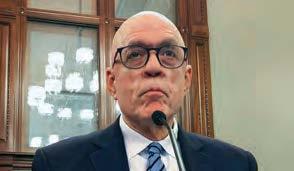

It’s hard to get around Chicago’s hottest neighborhood. But some worry more infrastructure would kill the vibe.
I BY DANNY ECKER KATHERINE DAVIS
KATHERINE DAVIS
ditional funds from more recent settlements with pharmacy companies CVS Health, Walgreens Boots Alliance and Walmart.
As the settlement money is dispersed over the next 18 years, Illinois will get the most cash it’s received yet to address the opioid crisis, which is still killing thousands of Illinoisans every year. e funding gives Illinois a unique opportunity to make meaningful progress on the issue. But if state o cials waste or
SETTLEMENT on Page 6
BIG BUILDINGS ARE MAKING THE TRENDY Fulton Market District look a lot more like downtown. Now city o cials must decide whether the neighborhood needs Loop-like infrastructure to support its growth.

Developers last month formally proposed new projects in the once-gritty corridor totaling as many as 2,100 new apartments—including a 52-story high-rise—and nearly 1.4 million square feet of o ces across two new, large buildings. Others that developers Related Midwest and Cedar Street will present to planning o cials this week would add a 41-story, 1 million-square-foot o ce tower and a 28-story apartment building to the mix.
e wave of plans shines perhaps the biggest spotlight yet on longstanding questions about whether the district’s narrow streets—which were meant for wholesale meat push carts, not commuters—as well as its lone CTA train station and sparse parking options are adequate to maintain the
FULTON MARKET on Page 21

A new attempt at regional collaboration on growth. PAGE 3
For Marissa Lynn Ford, theater has always been in her blood. PAGE 7
Big money, or good ideas.
A air for publicity, plain old-fashioned good luck, hard work and the right connections. Not to forget big money.
ere are lots of ways to political fame. Having survived AIDS, multiple suicide attempts and governmental chaos are not normally among them. But then Greg Harris is not your typical Illinois legislator. Harris this coming week, on Jan. 11, will o cially retire as Illinois House majority leader. e 67-yearold North Sider will do so with a bucket full of accomplishments, a sterling reputation and a long list of admirers on both sides of the legislative aisle. Whatever your political persuasion is, he’s a testament to the fact that, even in these dark times, American democracy can and does produce surprise winners.
“Never in the world” did he expect to become one of the powers in Illinois government, the highest-ranking openly LGBTQ person ever to hold o ce in this state,
Harris said in a phone chat the other day as she prepared for—what else?—one nal legislative session.
Yet, “I’m leaving pretty happy,” with no real regrets, he added, pointing to accomplishments including enacting the state’s samesex marriage law and climate-protection measures, and being one of the behind-the-scenes wizards who balanced the state’s budget while nding more money for social services, especially health services.
“Working with him on budget and Medicaid issues has been a true highlight of my time in the House,” tweeted state Rep. Tom Demmer, a Republican who often served as point person for his caucus on budget and Medicaid issues. “All of his colleagues, and the House as an institution, will miss his leadership.”
Harris grew up in Denver but moved here to take a governmental relations job with a trade group.
e group moved, but Harris soon found himself a new gig, heading an agency that delivered meals
to those a icted by the then fully raging AIDS epidemic. He was hit by full AIDS himself when running now-U.S. Rep. Mike Quigley’s campaign for 46th Ward alderman and, with friends falling left and right, melted down.
Asked recently by a Reader interviewer about his attempted suicides then, Harris says he paused for a moment and then answered the question. People need to understand that severe mental health problems are everywhere, and can be treated, he told me when I asked why he was so candid. If nothing else, the episode made him “understand, when you’re down and out and struggling, what kind of (government) resources you need.”
He survived, becoming chief of sta to former Ald. Mary Ann Smith, 48th. When Larry McKeon, then the state’s only out legislator, announced his retirement in 2006, Harris was appointed and then elected to the post. He since has
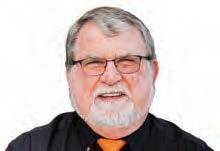
been re-elected seven times.
Harris became majority leader when another lakefront liberal that then-Speaker Mike Madigan had advanced to the job, Hyde Park’s Barbara Flynn Currie, retired. He expresses no regrets about serving as a top lieutenant to Madigan, who since has been indicted on federal corruption charges. But Madigan, a once staunchly conservative Southwest Side Catholic, did more for the political left over time with the rest of his caucus, Harris says.
Currie, interestingly, says about the same thing. “Madigan did a solid job of passing legislation and solving problems,” she told me. “ ere’s no doubt he moved to the left over time.”
e new speaker, Emanuel “Chris” Welch, kept Harris on, and has been e usive in his praise. So is Quigley, whose life could have been a lot di erent had his campaign manager been able to function. “He’s a great story,” Quigley puts it. “Illinois and Chicago have been lucky to have him.”
Harris says he’s not sure what’s next. Friends recently feted him at an event at which he was presented a tiara—“a really nice tiara.” Having, like a lot of us, been e ectively married to his job for so long, he says maybe he’ll now have time to focus on building a personal life.
“I don’t know what’s going to happen next,” he says. “We’ll nd out.” But he’ll always have the tiara.
He orchestrated a manifest-destiny expansion that elevated the Big Ten Conference into college sports’ most in uential superpower.
He negotiated a media-rights deal that’s worth a fortune to each of the league’s 16 members, including mini-market, mid-level campaigners.
His was the only conference to put two teams in the current College Football Playo tournament. Both lost, but they went down throwing, in entertaining contrast to the league’s grim, ground-andpound ethos.
Kevin Warren is on an impressive roll, but what worlds are left for the Big Ten’s exalted commissioner and highest-ranking Black executive in American sports to conquer?
How about the Chicago Bears?
Talk of Warren replacing the retiring Ted Phillips as Bears team president surfaced over the holidays. It almost makes too much sense not to happen . . . but these are the Bears, remember.
Warren has NFL bona des from 15 years with the Minnesota Vikings. During his tenure as chief operating o cer, he oversaw the design and construction of U.S. Bank Stadium, a state-of-the-art facility which replaced the dingy, SoldierField-With-a-Roof Metrodome as the Vikings’ home eld.
An accompanying team headquarters and performance center and the Viking Lakes real estate project were part of the deal as well. Ring any bells with what the Bears envision for Arlington Heights?
Warren would be a bigger deal to Bears fans if he were a coach or a quarterback (imagine that), but getting this hire right is an absolute imperative for the McCaskey family. An organization that prides itself on being one of the NFL’s most storied is on the verge of bottoming out, stumbling toward a 3-14 nish that will be the second worst in the
team’s 102-year history. Con dence in George Halas’ heirs as franchise stewards has all but evaporated.
It’s only Year One of the Ryan Poles-Matt Eber us regime, true. But if the “ rst-timer” model the Bears doggedly followed in hiring them had ever worked, they wouldn’t have been through seven coaches since they cashiered Mike Ditka after the 1992 season.
Ditka was a rst-time head coach, but he was a splashy hire, a Hall of Fame Bears tough guy with an America’s Team pedigree to smooth some edges. And he had to answer—at least, initially—to Jim Finks, who dragged a momand-pop Bears operation into the 20th century after building Super Bowl teams in Minnesota.
Since then, it’s been a succession of Mark Hatleys and Phil Emerys, Marc Trestmans and Matt Nagys— all vetted and hired by Phillips and various McCaskeys. Warren (or whoever) will have to do better. He can’t do much worse.
e task will be enormous. is season devolved into sacri cing any chance at winning for “draft capital.”
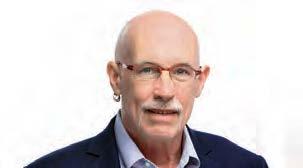

e most pressing question—Can Justin Fields become the Bears’ rst “franchise quarterback” since Sid Luckman?—has gone unanswered. Fields isn’t blameless—he’s often too quick to run for his life—but Peyton Manning would look like Craig Krenzel operating behind the line and throwing to the receivers the Bears have given Fields.
What Sunday’s trip to the Detroit woodshed made obvious is that the Bears are a lot more than a high draft pick away from a respectable roster. Warren (or whoever) will have to determine if Poles, just 37, has the chops to ll the abundant holes.
What’s in it for Warren? Big Ten commish, after all, is a big-time gig, with 16 far- ung constituencies as opposed to a centralized one.
But that’s not so advantageous. Sixteen constituencies equal 16 school presidents . . . 16 bosses, not to mention 16 athletic directors and a handful of TV networks, all of them seeking a self-interested say in how things are done. A commissioner’s real power derives from his ability to build consensus.



With the Bears, Warren would answer only to Virginia and George McCaskey and a McCaskey-dominated board. ey’re not in a position to deny him anything reasonable.
And it’s the Bears. eir hold on their city’s emotions is as unbreakable as it is inexplicable.
e rollicking 1985 edition captured the hearts and minds of sporting Chicago like no team before or since. e self-destructive impulses responsible for a failure to repeat and a gradual decline would diminish them in most places, but not here, not 37 years after their moment of glory. e fans’ love is unrequited, but it never fades.
Bob Brenly used to say that
they’d name the lake after the rst manager to deliver a Cubs World Series title to Chicago. Lake Maddon never materialized.
Lake Warren might, and it wouldn’t stop there.
Crain’s contributor Dan McGrath is president of Leo High School in Chicago and a former Chicago Tribune sports editor.
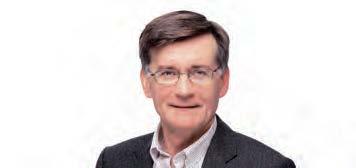

When Kyle Cline was studying electrical engineering at the University of Illinois nearly two decades ago, he sought out Caterpillar for an internship.
“I grew up in Decatur, where Cat has a huge factory,” says Cline, now based in Champaign as director of machine analytics for Caterpillar’s digital group, while also serving as its recruiting liaison. “I set up a tour at the research park on campus and got to know the Cat manager at U of I.”
ese days, the heavy-equipment maker is doing the wooing as it seeks talent in a tight job market. Another big di erence is the focus of Cat’s recruiting e orts: e company now is trolling for tech talent along with industrial engineering grads.
As downtown Chicago’s tful recovery from the pandemic lingers, JPMorgan Chase is signicantly reducing its brick-andmortar presence in the Loop and environs.
e area’s largest commercial and retail bank, Chase in the past year has shuttered or is in the process of closing four of 10 downtown locations. at leaves
six for a banking colossus that o ered downtown customers 13 branches as recently as mid2018, according to Federal Deposit Insurance Corp. data.
Cincinnati-based Fifth ird and Charlotte, N.C.-based Bank of America now have more or as many locations downtown as Chase, which is far larger in terms of local deposits. Fifth ird has seven branches while B of A has six.
e latest Loop location Chase is closing is at 55 E. Monroe St., according to a ling with the U.S. O ce of the Comptroller of the Currency. Chase noti ed regulators of its plans to shutter that location late last month.
Other downtown branches Chase eliminated last year were at 2 N. LaSalle St., 850 S. Wabash Ave. and 340 E. Randolph St.,
At rst glance, the latest attempt at regional collaboration on economic development in the Chicago area seems like a triumph of hope over experience.
at may well be the case. Previous e orts to unite the rivalrous efdoms of northeastern Illinois for the betterment of all have zzled.
But that’s no reason not to try again, provided goals and expectations re ect on-the-ground realities and prior experience.
Unveiled Jan. 4, the Greater Chicagoland Economic Partnership includes the city of Chicago, seven counties making up the metropolitan area and several economic development agencies. It aims to change the zero-sum equation that characterizes much of economic development in our region. In what can charitably be called a “stretch goal,” it even includes a promise by members to stop poaching their neighbors’ businesses.
Wouldn’t that be something? Cross-border poaching is a time-honored custom around here. e latter decades of the last century saw mass migration of Chicago companies to suburbia. Tables turned in recent years, as former Chicago Mayor Rahm Emanuel lured a parade of corporate headquarters back to the city.
Apparently that’s all in the past. Instead of raiding each other, Mayor Lori Lightfoot, along with the bosses of Cook, DuPage, Kane, Kendall, Lake, McHenry and Will counties, say they’re joining forces to foster investment and job creation across the metropolitan area.
Proclaiming “a new era of regional cooperation,” they promise to promote “robust, equitable economic growth by building a globally competitive ecosystem that works for everyone, with worldclass transportation infrastructure, economic sectors, talent and innovation.”
e initiative suggests local leaders have come to appreciate a couple of important realities of economic development. First, a corporate move from one part of metropolitan Chicago isn’t a win for the region as a whole. Second, and more importantly, fragmented, internally competitive economic development e orts among numerous municipalities don’t fully capitalize on the combined strengths of greater Chicago.
Sales pitches from the city or any individual county fail to capture the full package of assets a company would nd in our area. e region has a compelling collection of transportation infrastructure, workforce talent, world-class educational and scienti c institutions, and civic and cultural amenities.
ese assets span multiple jurisdictions, which matter a lot to local
elected o cials but matter little to business owners deciding where to invest. Our rail and road networks and electricity grid ignore municipal boundaries. Local retailers, restaurateurs and entertainment venues draw customers from across the region. Area employers hire workers from multiple ZIP codes. Similarly, economic problems such as housing a ordability, pollution, poverty, aging infrastructure and tra c congestion reverberate throughout the area.
Economically, metropolitan Chicago is a single, integrated entity. When new investment comes into the area, everyone bene ts. New jobs in Chicago spur housing demand in both the city and suburbs. A new factory in Will County creates job opportunities not only there but in surrounding counties. And when students in one part of the region leave school without job skills, employers in other areas su er.
Yet an integrated, regional approach to economic development has eluded us, even as some other metropolitan areas learned to work together. Backers hope the Greater Chicagoland Economic Partnership will succeed where prior e orts fell short.
It’s starting out modestly, as a $3 million, three-year pilot project overseen by World Business Chicago, the city’s economic development arm, which historically has operated as a de facto subsidiary of the mayor’s o ce. WBC says it will pay more attention to suburbia and hire a few sta ers for the project. We’ll see if a group run by a mayoral appointee can curb its city-centric tendencies.
e partnership hopes to notch some early wins that will attract longer-term corporate funding. Organizers laid out some reasonably achievable, if somewhat vague, initial goals for its pilot period, such as “150 pro-Chicagoland decisions” and “500 shared new investment opportunities.”
How will it work? According to its “purpose statement,” the group envisions itself as a forum for collaboration among “corporate, civic and institutional partners to leverage our combined strengths” and advance plans to bene t the entire region. It would also work to bring federal and state dollars to the region, serve as a clearinghouse for regional information sharing, and promote communication among various local governments and institutions.
It makes sense, on paper. And I’d like to believe the new group will be able to spark the regional collaboration we need. Its success, however, hinges on the willingness of local o cials to share opportunities and resist temptation to beggar their neighbors.
they’re
CATERPILLAR AND DEERE ARE VISITING CAMPUSES MORE OFTEN AND MAKING JOBS MORE APPEALING BY SETTING UP SHOP IN CHICAGO.
What does that say about how JPMorgan Chase—the city’s biggest retail and commercial bank—views the future of downtown Chicago?Cat recently recruited Pooja Bhagchandani, a U of I computer engineer from Abu Dhabi.
U of I and other universities to woo budding coders and data scientists I
Some of Chicago’s best-known developers are collectively pitching more than $1.2 billion worth of projects to turn outdated ofce buildings on and near LaSalle Street into places to live, a key step toward what could be a historic transformation of the vacancy-ridden Loop thoroughfare.
Responding to a call for such proposals from Mayor Lori Lightfoot, who is dangling tax-increment nancing and other public incentives to help nance them, developers submitted nine proposals for seven di erent properties, according to a spokesman for the department of planning and development. Among the group: Chicago-based Riverside Investment & Development, which lured Bank of America to be the anchor tenant of a new Wacker Drive skyscraper, is proposing to spend $258 million redeveloping the art deco tower the bank left behind at 135 S. LaSalle St. with 430 apartments and a mix of other uses.
e proposals come three months after Lightfoot unveiled a LaSalle Street Reimagined program to try to inject new life into the foot tra c-starved Loop, her boldest move to date to revitalize downtown as e ects of the COVID-19 pandemic wane. With remote work weakening demand for o ce space and record-high apartment rents downtown, the city sought ideas from developers to revamp outmoded properties with residences and committed to help subsidize them if at least 30% of the new units created would be a ordable. e goal: Creating at least 1,000 new residential units on and near LaSalle over the next ve years.
e deadline for submissions passed late last month. City
planning o cials will now evaluate the proposals and put them through a “community engagement process,” with decisions on which projects will win city subsidies potentially coming this spring, according to a planning department spokesman.
Two proposals were submitted by Chicago developer Mike Reschke, who is betting heavily on a post-COVID Loop renaissance. He struck a deal last year to overhaul the James R. ompson Center for Google and sell the building to the tech giant, which is expected to put thousands of its employees in the building when the project is completed in a few years.
Reschke is leading a venture planning a $180 million project to convert the upper portion of the former BMO Harris Bank ofce building at 111 W. Monroe St. into 349 apartments and a hotel on the lower oors. Nearby, Reschke aims to turn o ce space above the distressed JW Marriott Chicago hotel into 280 apartments, a $130 million project. A Reschke-led venture owns the ve- oor block of o ces, though his lender led a $50 million foreclosure lawsuit against his rm in 2021 alleging it defaulted on its loan. e lawsuit is still pending.
Here is the full list of submissions, according to the planning department:
30 N. LaSalle St.: A venture of Chicago developer Golub and American General Life Insurance plans 432 units (130 of them a ordable) in the 43-story o ce tower, as well as ground -loor retail and green space and seating along Washington Street and LaSalle Street. e total cost of the project is estimated at $186 million. e proposal comes just weeks after American
General Life Insurance (an AIG subsidiary) led a $186 million foreclosure suit against the building’s owner, New York-based AmTrust Realty.
208 S. LaSalle St. (2 submissions):
An a liate of Reschke’s Prime Group plans the $130 million, 280-unit conversion with 84 affordable apartments; and a venture that includes Chicago-based Sims Properties Development & Management proposed a $50.2 million conversion of a portion of the building with 102 units, 30 of which would be a ordable.
135 S. LaSalle St.: Riverside Investment & Development would partner with the distressed property’s owner, AmTrust Realty, on the 430unit project with 129 a ordable units. Additional improvements would include up to 80,000 square feet of new lobbies, retail, food and beverage, event and cultural space and a potential fresh-market grocer. e project’s estimated cost is $258 million. AmTrust was negotiating a deal last year to surrender the 1.3 million-square-foot o ce
tower to its lender rather than face a likely lawsuit over a loan default, a move known as a deed-in-lieu of foreclosure.
400 S. LaSalle St.: Chicago real estate rm Urban Resolve proposed to turn the six-story former Cboe Global Markets headquarters building into a “scholastic [e-sports] venue” that includes “226 beds for student housing,” according to the planning department. e project would cost an estimated $104 million and include a ground- oor food court, a student mental health and wellness center and a tness center.
105 W. Adams St. (2 submissions):
• Minneapolis-based real estate rm Maven Development Group plans a $167 million project to turn the distressed upper oors of the 41-story Clark Adams Building into 423 units, 127 of which would be a ordable. e proposal does not include the Club Quarters Hotel and Elephant & Castle Pub on oors 1-10.
• A joint venture of Chicago devel-
opers Blackwood Group and Celadon Partners proposed 247 units in the building, with 75% of them (185 units) o ered at “a ordable levels,” according to the planning department. e submission included plans for a food market and a letter of intent from Stockyard Co eehouse to open a location in the building. e project’s estimated cost was $192 million.
170 W. Washington St.: By far the smallest submission, a venture that includes restaurateurs and investors Scott Cochrane, Kevin Killermann and Carmen Rossi (which own the ve-story o ce building) plan a $2 million project to convert it into four apartments (1 a ordable) with new retail and commercial space.
111 W. Monroe St.: Reschke’s $180 million plan for the former BMO Harris building would include 349 units (105 of which would be a ordable), as well as a hotel on the lower seven oors, a spa and tness center, a new rooftop pool, and restaurant and basement parking.
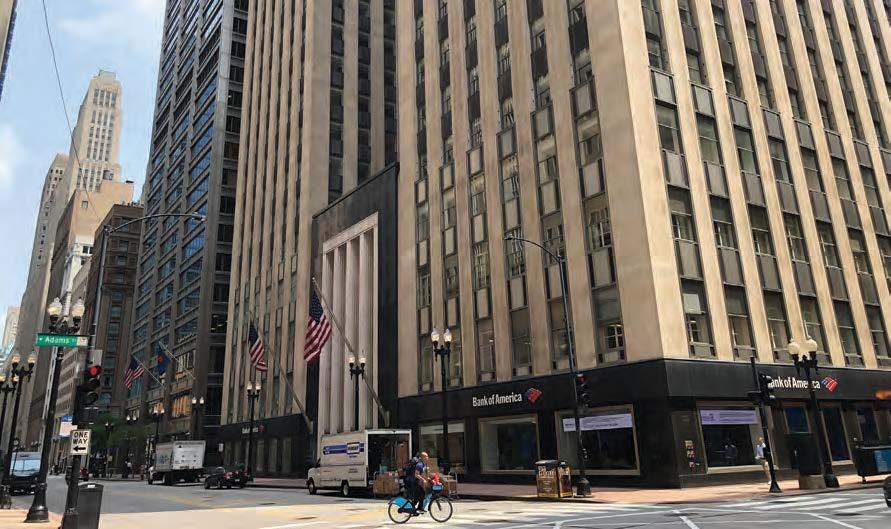
Chicago-based Catholic hospital chain CommonSpirit Health has been hit with a proposed class-action lawsuit over its monthlong data breach at the end of last year that a ected more than 600,000 patients.
e lawsuit alleges that CommonSpirit was negligent in protecting patients from the threat of cyberattacks that leak private and sensitive patient health, insurance and nancial information, and can put consumers at a heightened risk for identity theft and nancial fraud. e complaint argues that CommonSpirit had “inadequate” data security measures to protect and secure patient information.
CommonSpirit operates 140 hospitals and more than 1,000 care sites across 21 states. ough
CommonSpirit is headquartered in Chicago, it does not operate any hospitals in Illinois.
Facilities a ected in the cyberattack include those in Iowa, Nebraska, Tennessee and Washington. e suit says there are at least 100 members in the proposed class, though the U.S. Department of Health & Human Services’ Ofce for Civil Rights reports that more than 623,700 people were a ected. CommonSpirit serves 20 million patients at its facilities across the country, according to the suit. HHS is now investigating CommonSpirit’s breach.
e suit was led Dec. 29 in U.S. District Court for the Northern District of Illinois by Leeroy Perkins, a Washington resident and patient at CommonSpir-
it’s Virginia Mason Franciscan Health hospital in Seattle. Since the breach, Perkins said he has been required to spend valuable time monitoring his various accounts and changing passwords to protect his information. e suit seeks damages in excess of $5 million and injunctive relief for Perkins and all others similarly situated.
Attorneys for Perkins and a CommonSpirit representative did not immediately respond to a request for comment.
CommonSpirit rst reported in early October that it was dealing with an IT security issue that was disrupting operations at some of its facilities. About a week later, the health system con rmed it was the victim of a cyberattack and was forced to take patient portals and some electronic
health records o ine.
Electronic health records are crucial to modern-day hospital operations. ey allow physicians, nurses and other caretakers to see patient history, scans, medication and other details about treatment plans.
e cyberattack wasn’t resolved until a month later, when CommonSpirit said it had reinstated most EHRs at its hospitals and care sites. At the time, CommonSpirit said that upon discovering the ransomware attack, the organization mobilized to protect its systems while continuing to give care to patients.
Health systems have increasingly become targets for cybercriminals. According to research from Protenus, a Baltimore health
care compliance company, there were 905 reported health data breaches in 2021, up 19% from 758 the year before.
In Chicago, Duly Health & Care, formerly known as DuPage Medical Group, reported a data breach in 2021 that a ected more than 600,000 patients. In 2019, Rush disclosed a data breach that exposed 45,000 people.
More recently, local health systems have also been dealing with patient data breaches after using internet tracking technologies from companies like Google and Facebook parent Meta, which help health systems collect details about how patients and others interact with their websites.
Advocate Aurora Health, Northwestern Medicine and Rush System for Health have each been sued over the issue.
City planning o cials, who called for the housing proposals to help revitalize the foot tra c-starved Loop, will now weigh whether to help subsidize them135 S. LaSalle St., where a 430-unit project with 129 a ordable units has been proposed. DANNY ECKER
At ComEd, we’re at work behind-the-scenes to bring you the power you need for the holidays. That way, you can focus on what makes the season special. We’ll handle the rest.
Record-breaking reliability, powered by ComEd.

You bring the magic. We’ll take care of the lights.© Commonwealth Edison Company, 2022
misdirect the funds, Illinois could squander a chance to reduce opioid use and save lives.
“My hope is that those funds will be redirected to those communities that have had a tremendous hit,” says Lori Ann Post, a professor at Northwestern University’s Feinberg School of Medicine and the director of the Buehler Center for Health Policy & Economics. “ ere’s nothing we can do to bring those people back, but at least we should support their communities.”
As Illinois moves forward, it can take lessons from the $246 billion tobacco settlement in 1998. Illinois’ share amounts to $9.1 billion, according to the attorney general. Research shows that many states used their share to shore up budgets instead of paying for smoking cessation programs and related health care costs. A 2002 study from Illinois’ scal agency shows that some of the state’s share was used for tobacco prevention control, but much of it also went to general medical research, venture-tech, Medicaid drug programs and the earned income tax credit.
Illinois leaders say they aim to equitably distribute the opioid settlement funds to overdose abatement programs, which include intervention services, medication-assisted addiction treatments, rehab centers and prevention programs, as well as buying and supplying Narcan, a medication that reverses overdoses.
About 20% of the funding will go directly to the state, with another 25% split among counties and eligible municipalities, which will be required to use it for forward-looking opioid abatement purposes. To distribute the other 55%, Gov. J.B. Pritzker signed an executive order in July establishing the O ce of Opioid Settlement Administration within the Illinois Department of Human Services and tasked the Illinois Opioid Remediation Advisory Board to make funding recommendations to a committee of Illinois agency department heads.
“ is executive order . . . cements a framework for making the best use of these new resources,” Pritzker said during the press conference announcing the ofce and board.
Advisory board members were appointed by the Illinois Attorney General’s O ce and the IDHS, and range from public health o cials to behavioral health experts. Chicago Department of Public Health chief Dr. Allison Arwady sits on the board, along with Blanca Campos of the Community Behavioral Healthcare Association and Dr. Bernice Gordon-Young of the SMART Recovery Intervention Program.
eir challenge is picking winners and losers as various parties, from rehab centers to local health departments—which are typically already under extremenancial pressures—compete for the cash. Board members will also need to ensure the distribution process remains transparent to the public over the next two decades, and avoid con icts of interest. Like with any pool of money, there’s a risk funds will be given out based on personal or political connections rather than merit.
“We don’t want con icts of interest weighing in, and we also want people who can look for the good of the public as opposed to a particular private interest,” says Beverly Bunch, a professor in the School of Public Management & Policy at the University of Illinois Spring eld. “Also, how
do you weigh what’s good for the state of Illinois as a whole, as opposed to a certain part of Illinois?”
Controversy over the distribution process has already surfaced elsewhere. In Ohio, advocacy groups sued a local nonpro t tasked with distributing opioid settlement money over transparency concerns. e nonpro t, OneOhio Recovery Foundation, is led by political appointees.
In Illinois, Bunch argues transparency will be vital to successfully distributing settlement funding.
“It will be important for the committee to be transparent, whether that involves having a web page or public meetings or communicating through social media— just some way to keep people engaged so it’s a level playing eld so people know what’s going on and can apply for funds,” Bunch says.
IDHS did not make Secretary Grace Hou available for an interview, but spokeswoman Marisa Kollias said in a statement that all board meetings are open to the
public. To prevent con icts of interests for board members, Kollias said members received an overview of ethics and the state’s protocol regarding con icts of interest.
“Members were instructed to be transparent about any personal involvement that they may have that may be a ected by any funding recommendations, and to disclose such potential con icts of interest,” Kollias said. “As a general matter, potential or actual con icts of interest are addressed through disclosure and abstaining from voting on a recommendation that could/would directly bene t the member.”
To ensure “equitable allocation” of the funding to all parts of the state, the board will consider population, opioid use rates, overdose deaths and the amount of opioids shipped into each region of Illinois, Kollias added. Grant decisions must also be implemented following Illinois’ Grant Accountability & Transparency Act, which requires a coordinated and nonredundant
oversight process to limit fraud, waste and abuse. GATA also requires grantees to disclose how they spend funding after they receive it.
“Providers are held accountable through budgets, on the front end, and through reporting regarding expenditures and performance,” Kollias said.
IDHS has received nearly $30 million of the settlement funds to date and has awarded $2.7 million to expand community intervention services. It expects to grant $15 million in 2023.
While the funding is the most Illinois has ever received to address the state’s opioid crisis, the limited pool of dollars will likely spark debates about who needs it most.
“It is a tremendous amount of money, but we’re facing a tremendous need,” says Jud DeLoss, CEO of the Illinois Association for Behavioral Health, an industry organization that represents addiction and mental illness organizations, and a member of the Illinois Opioid Remediation Advisory Board. “I think it can make a di erence if it’s properly allocated and distributed to areas in need.”
Illinois opioid overdose deaths have tripled since 2013, killing more than 3,000 residents in 2021, according to the most recent gures available from the Illinois Department of Public Health.
Counties with the highest opioid death rates in 2021 spanned the state. Topping the list were Cook, Winnebago, Iroquois, Livingston and Calhoun counties, each reporting more than 32 deaths per 100,000 residents. Based on preliminary data from the Cook County Medical Examiner’s O ce, opioid overdose deaths that took place in the county during 2022 are on pace to exceed 2021’s record of nearly 2,000 deaths.
DeLoss argues that settlement funds should mainly be allocated to community-based behavioral health centers, saying they can be the most e ective and cost-efcient way to address the opioid crisis. He adds that funds should also pay for infrastructure improvements that can be used over the long term, like building, expanding and modernizing facilities.
“ e eld has not been prioritized for the past several years,” DeLoss says. “Historically, we have just not had the funding to build and to be able to provide those beds or the space necessary to treat this massive population of those seeking and needing care.”
e Illinois Association for Behavioral Health also advocates for prioritizing Black residents who’ve been victims of the opioid crisis.
IDPH data shows the opioid overdose fatality rate for Black residents is 60.8 per 100,000 people, three times as high as the rate for white residents and almost four times as high as Hispanics.
“ e people more likely to die from opioids or have a high risk here are going to be diverse populations,” Northwestern’s Post says. “And usually, whenever there’s big settlements, those are . . . the most overlooked.”
Warning in a recent study that opioid-involved deaths will escalate across the U.S. as more users mix opioids with other stimulants, Post argues that directing the opioid settlement funds to vulnerable communities is vital.
“I hope corruption doesn’t happen when it comes to dispersing this funding,” Post says. “I hope that we can dedicate funding towards treatment of those people
When did you become a theater bu ?

It’s in my blood. Growing up on the South Side, my family was always performing. We sang at church and at home, and we put on talent shows at larger family gatherings. It was about storytelling as a way to share our culture, history and church.
When I was very young, in day care. We recited poetry, such as “Hey, Black Child,” by Useni Eugene Perkins, put on costumes and danced. We were learning about who we are and being proud, through performance. That experience helped shape who I am.

I attended a private, North Shore high school with a mix of races, cultures, biases and classes. Anything I would experience in the world, including discrimination, I probably experienced there. Some people at school had never encountered that mix, so the (Black, Indigenous and students of color) became their learning experience, from di erences in hair and clothing to the way we interacted on campus.
That I needed to always be on guard, and that’s how I would have to move through life. To be myself, but shield myself.
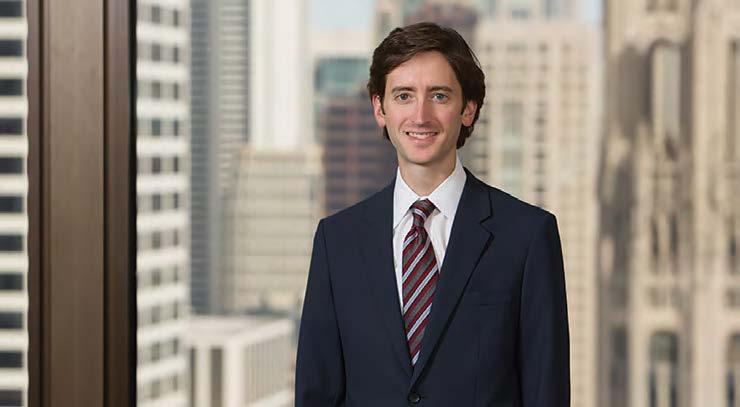


During my freshman year at Drake (University) in Iowa, I worked three jobs. I was a hostess at a Cheesecake Factory in Des Moines, a clerk at a clothing store, and I was in a before-school jobs program starting at 5 a.m. I did look sleepy that year.
An unforgettable career moment?
Helping produce sensory-friendly performances for people on the autism spectrum when I worked at Goodman Theatre. All of us had tears in our eyes during the rst adapted performance of “A Christmas Carol” in 2016.

I was robbed my senior year of college in a parking lot. A guy grabbed me pretty roughly from behind and demanded that I give him my purse. Then he snatched it and ran away. Now I always have my keys ready and look around when I’m in a parking lot alone.
I haven’t yet, but I’m loosening up a little. I was a huge thrift store person, but I’m starting to shop retail. The sticker prices are shocking me, though. I’m used to getting shirts for $5. Ha!
Mind control, like Professor X in the X-Men comics. He always has a gentle spirit, but he has the power to read your mind and get you to do things he wants you to do.
Cool.
Adam Law Real Estate Group Jason Robin Real Estate Group
Jason Robin Real Estate Group

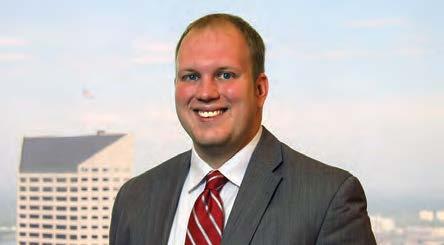
The process will look very di erent from the one that governed the rst round of license approvals, which began three years ago
BY JOHN PLETZIllinois will accept applications later this month for 55 new retail recreational marijuana licenses.
e process will look very different from the one that governed the rst round of 192 licenses, which began three years ago and was bogged down by the pandemic as well as bureaucratic complications and litigation.
e state now has resigned itself to a lottery process from the outset, which means applicants will submit a simpli ed application. Gone is the requirement to le at the outset lengthy applications that could easily run thousands of pages and cost tens of thousands of dollars to compile.
e original licensing program, based largely on the state’s medical-marijuana program, anticipated a limited number of applicants who would be issued licenses according to their scores. But because of a glut of perfect scores—and a loophole that allowed applicants to apply for as many licenses as were available—there were far more successful applicants than there were licenses.
e result was that a lottery procedure originally envisioned as a tiebreaker was instead used to issue all the licenses. e process undermined the intent of the law, designed to favor “social-equity” applicants who either had been arrested for minor marijua-
na possession or who lived in disproportionately impacted areas or those neighborhoods hit hard by poverty and violence associated with the war on drugs.
e premise of bringing more Black and Brown owners into what has been an overwhelmingly white- and male-dominated industry rang hollow for some, as applicants associated with established marijuana companies operating in other states, as well as politically connected or wealthy white applicants or those who had previously received marijuana licenses in Illinois, won licenses.
e state only began issuing the long-awaited licenses late last summer, and few successful applicants have managed to get stores open so far. In the meantime, the fortunes in the marijuana industry have shifted: Marijuana sales have slowed in Illinois and other states, as customers felt the impact of double-digit ination. e cost of building new stores has risen with in ation, just as the availability of capital has shriveled amid rising interest rates and a massive decline in investor interest in marijuana stocks. Hopes of federal banking legislation, which would have increased capital available to new operators and improved the appetite for investment in the cannabis industry, were dashed in the waning days of 2022.
Individual licenses for established retail stores once fetched $20 million. But amid a larger pool of licenses and weakening industry economics, the value of individual licenses is falling. Industry experts have suggested one-third or more of the initial licensees will not open stores.
Under the revised rules, the state is still focused on social equity. But it has tweaked the criteria, eliminating Illinois residency provisions and bonus points for military veterans—both of which unexpectedly proved problematic in the initial round of licensing.
Applicants must be majority-owned by someone who lived in a disproportionately impacted area or had an arrest or conviction for marijuana possession or delivery that no longer is illegal— or whose family member meets the criteria. Eligibility also was extended to shooting victims.
e price of an application dropped signi cantly, to $250, from $2,500 under the previous rules.
e new rules eliminate a provision, derided by critics as the “slave master clause,” which allowed applicants to achieve social-equity status by hiring at least 10 employees who lived in disproportionately impacted areas or who had arrests or convictions for low-level marijuana possession.
Other potential quali cations under the new rules include an
applicant agreeing to:
Operate a dispensary in a disproportionately impacted area for two years.
Purchase at least 25% of inventory from social-equity growers and infusers for two years.

Source at least 30% of all contracts from approved minority, women or disabled vendors for two years.
Provide a $250,000 grant to cannabis-training programs at community colleges or to a socialequity applicant; or pay $500,000 to the state’s cannabis business development fund that provides funding to social-equity applicants.
Another key change will allow applicants to apply for only one license. In the initial round of licensing, some applicants won as many as seven licenses, while others received none.
“We agree the application process should have been changed and made less onerous,” said Pam Altho , executive director of the Cannabis Business Association of Illinois, a statewide trade group, though she criticized the state for not issuing industrywide diversity and disparity studies of ownership and employment that were called for in the statute. “ e desire by the state was to ensure easier access by social-equity applicants. ey were responding to frustrations they heard from social-equity applicants.”
Sales of luxury homes fell steeply in the last quarter of 2022.
Sales of Chicago-area homes priced at $1 million and more were down 35.3% from the same quarter in 2021, according to a report from Red n. e online real estate marketplace reported on sales in the upper 5% of the price ladder, which in the metro area means homes going for $1,066,000 or more.
In the city, $1 million-andup sales were down 34% in the fourth quarter compared to the same time a year ago.
“We felt it,” said Jason O’Beirne, a Jameson Sotheby’s International Realty agent in the city with several recent sales in the price range. “People are hesitating before pulling the trigger. In 2021, there was no hesitation.”
O’Beirne and other agents told Crain’s that fast-rising interest rates spooked buyers at this level, though the scare came later than it did for midpriced buyers.
ose lower-end buyers started jumping out of the housing market months earlier, and their departure showed up in summer sales gures.
“Everybody (who’s buying) below about $2 million is interest-rate sensitive,” said Deborah Hirt, a Compass agent. “At some point interest rates put the brakes on everybody” below that $2 million cap. Crain’s tracks sales at $4 million and up; at year-end, the total was 134, up from 101 in 2021 and well above the pre-boom average of 51 sales per year.
e drop in luxury-priced sales was not as steep here as nationwide. Across the country, upper-tier sales were o 38%, Redn reported, and that’s several points larger than the 31% drop in sales at all prices.
In the Chicago area, luxury sales are o slightly less than the market overall. e number of homes sold in the metro area was down an estimated 36.8% in the fourth quarter.

Crain’s made this estimate using preliminary month-end data for December 2022, along with nal data for the previous two months. Final data for December will not be available until later this month.
Rising interest rates weren’t the only reason for the autumnal
drop in sales, agents said.
ere was also the return of the seasonal cycle that characterized the real estate market in the normal years before COVID and low interest rates launched a nationwide homebuying binge in mid2020 that lasted into 2022.
During the boom years, “a lot of people forgot that it always slows down in the fall,” said Shirley Walker, a Berkshire Hathaway Home Services Chicago agent based in Hyde Park.
e seasonal drop was exacerbated by the fact that sales increased year-round during the boom, said Tommy Choi, an agent with Keller Williams One Chicago. “ e market had been so hot,” he said, that the new heights reached by sales volume would make any return to something like normality seem huge.
at’s in part because the enormous wave of home sales in 2020 through the rst part of 2022 cannibalized future sales, and in part because sellers fearing a decline in prices pulled out of the market.
A sagging stock market also catches some of the blame. e stock market had its worst year since 2008, and “people react when their portfolios are a ected,”
said Compass agent Brad Lippitz.
For a uent people using a mortgage—not all of them do; many pay cash—the year’s interest rate increases were magni ed, O’Beirne said. “People who were trading up from a house with a 3% mortgage to a more-expensive house with a 6% mortgage were basically re nancing all their (mortgage) debt at a higher rate,” he said.
Chicago’s drop in luxury sales was smaller than in many big cities. Of 50 markets covered by
the Red n report, nine saw luxury-priced sales drop by more than half from late 2021 to late 2022. Hardest hit were Nassau County, New York, where luxury sales were down nearly 66%, and San Diego, down a little over 60%.
In Nassau County, luxury-priced housing, which Red n de nes as the upper 5%, starts at $2.4 million, and in San Diego, nearly $3.16 million. San Francisco tops the list, with luxury prices starting at just a little shy of $5 million.
A leading beer industry trade group amended its advertising and marketing code last month to address the rise of brands such as Hard Mtn Dew, Simply Spiked Lemonade and Topo Chico Hard Seltzer as alcohol and non-alcohol beverage brands continue to combine forces.

e new code from Beer Institute is meant to clear confusion among consumers as well as tamp down apparent tension between competing brands within the group.
It “will help consumers distinguish between alcohol and non-alcohol versions of beverages with popular brand names,” stated the organization, whose members include Molson Coors and Anheuser-Busch InBev. e new code has already taken e ect.
e code change was also sparked by high interest in crossover brands, and by some brands left to compete with them, according to Jenn Litz, executive editor at Beer Business Daily, a trade publication.

“It’s not a secret . . . that many existing bev-alc players, mostly competitors of the likes of Hard Mtn Dew, Simply Spiked, etc., have sounded the alarm about such brands, taking issue with their placement in stores and more,” Litz said in an email.
e new code is compulsory for brewer members and states that advertising, packaging and marketing materials for alcoholic variants of non-alcohol products “should be readily distinguishable from the advertising and marketing materials of the non-alcohol product to not confuse consumers about the alcohol nature of the alcohol variant. Advertising and marketing materials, including but not limited to displays, signage, and sampling, should not feature both the non-alcohol product and the alcohol variant.”
Liquor and beer brands have increasingly joined with makers of soft drinks, juice and sparkling water to chase the RTD, or “ready-to-drink” alcohol market, which is expected to be a pocket of growth for the beer industry in the coming years. Hard Mtn Dew is a collaboration between PepsiCo and Boston Beer Co.; Simply Spiked and Topo Chico represent partnerships between Molson Coors and Coca-Cola.
e change comes weeks after the code review board for the liquor industry trade group Distilled Spirits Council of the U.S. (or Discus) imposed similar guidance to its members regarding advertising, mar-
keting and merchandizing of new alcohol crossover products entering the marketplace. ese include drinks like Coca-Cola and Brown Forman’s forthcoming Jack & Coke.
“ e spirits industry has a longstanding track record of e ective self-regulation and distillers are fully committed to bringing these new products to market in a responsible manner,” Courtney Armour, Distilled Spirits Council chief legal ofcer and code review board liaison, said in a statement. “Our objective in developing this new guidance is to assist both suppliers and retailers in the responsible marketing and merchandizing of these products.”
Carson Benowitz-Fredericks, research director of the alcohol industry watchdog group Alcohol Justice, said the organization was pleased the new regulation “recognized there was a problem,” with what he referred to as “alcopops.” However, “in their rationale they don’t mention preventing underage use or reducing the appeal these products have to underage users,” he said. “ is is a major concern with alcoholic products masked as sodas.”
While the Beer Institute and Distilled Spirits Council advocate for self-regulation in marketing and advertising, a related battle is taking place over federal rules governing merchandising. A call for comments over potential regulatory changes by the Alcohol and Tobacco Tax and Trade Bureau last month drew comment from 20 beer distributors—all associated with Anheuser Busch InBev—concerned that crossover drinks were utilizing soft drink “slotting fees” to ensure placement at retail, an option alcohol beverages do not have.
e distributors alleged retailers were displaying soft drinks and their alcohol variants together and outside of the traditional alcohol aisle. “It is unrealistic to think that soft drink manufacturers are not leveraging slotting fees for their non-alcohol brands to ensure preferential shelf space for the alcohol counterparts,” according to one comment published by Beer Business Daily.
Carson-Benowitz of Alcohol Justice said his organization also had concerns over merchandising, saying soft drinks and their alcohol variants have been displayed in the same refrigerated cases at retail.
Jon Springer writes for Crain’s sister publication Ad Age.
Rivian struggled mightily last year to ramp up its Illinois assembly plant and built just 24,337 vehicles. It delivered just over 20,000 vehicles for 2022.
BY LAURENCE ILIFF
Rivian Automotive said it came up just short of its 2022 production target of 25,000 units due to supplychain issues and a slow ramp at its assembly plant in Normal.
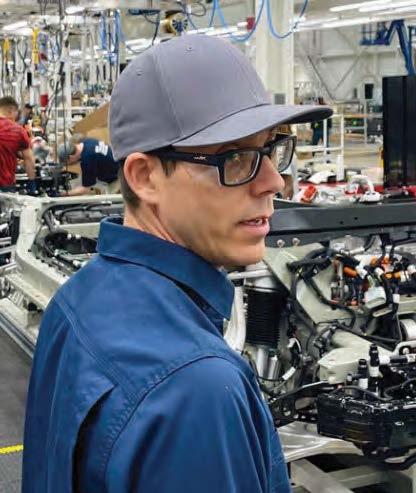
e EV startup said Jan. 3 that it produced 24,337 vehicles in its rst full year of production, comprising R1T pickups, R1S crossovers and EDV delivery vans for Amazon. Rivian does not break down production by model.
Rivian had originally forecast 2022 output at 50,000 vehicles before a lack of critical parts caused repeated shutdowns of its assembly line and a reassessment of its potential in mid-2022. e Irvine, Calif.-based automaker delivered 20,332 vehicles last year, leaving about 4,000 in inventory.
For the fourth quarter, Rivian produced 10,020 vehicles after adding a second production shift on improving parts supply and delivered 8,054. In its third-quarter earnings report, the company said it had a backlog of more than 100,000 preorders for the R1T and R1S, in addition to a multiyear Amazon order for 100,000 vans.
e 2022 production miss capped a di cult year for one of the world’s most promising EV startups, which brie y had a higher market valuation than Ford
Motor Co. when the startup began trading on the Nasdaq exchange.
Rivian’s stock price is down by 87% since its November 2021 initial public o ering.
Rivian’s market value is now below $15 billion, from a high of well over $100 billion just after its IPO, Reuters reported.

In a letter to employees Jan. 3, CEO R.J. Scaringe praised the company’s workforce for griding through the setbacks.
“ ere were many headwinds in 2022,” Scaringe said. “Considering the supply chain issues that caused the plant to close for 20 days and shut down early on 50 days in the last 12 months—and the inclement weather that forced us to close for an additional 5 days—our team stayed focused and worked through the challenges together.”
Although Rivian did not meet its formal output goal, it managed to get 25,051 vehicles o the assembly line, Scaringe said. He explained that 714 vehicles were still in the process of full completion as they were awaiting parts, software validation, wheel alignment, charging and other nishing touches.
Baird Equity Research said it had forecast Rivian’s fourth-quarter deliveries at 10,700 vehicles
and attributed the miss to supply-chain issues. “We forecast a signi cant uptick in production for 2023 as the factory in Normal continues to ramp.”
Like other EV makers, supply-chain disruptions have pressured Rivian, which also shelved a plan in December to build delivery vans in Europe with Mercedes-Benz, Reuters said Jan. 3. Rivian earlier pushed back the production startup of its smaller R2 vehicle family to 2026 at the company’s planned $5 billion plant in Georgia.
From an economic development perspective, the new year is o to a decent start after a relatively rocky 2022. A few bits of good local job-related news popped up in the headlines in the rst week of January: For one, incoming Exelon CEO Calvin Butler announced he’s moving back to Chicago, signaling that this $43 billion energy company and its thousands of employees will remain headquartered here. Meanwhile, the Fulton Market boom showed signs of rolling on as Related Midwest unveiled plans for a massive o ce tower there. And Chicago can, in a way, count a new corporate colossus among its ranks as GE Healthcare debuted as a standalone publicly traded company.
But even more encouraging news to those who care about the Chicago region’s future
as a global business center was the Jan. 4 announcement that the city of Chicago and surrounding counties are going to work together—and not against one another—in the worldwide hunt for corporate headquarters and investment.

For years, Crain’s and others in the business community have called on our elected leaders to take a more uni ed, coordinated approach to regional economic development for the simple reason that the entire metro area—stretching from northwest Indiana and even northward to Milwaukee—is in this together, whether pols want to acknowledge it or not. Chicagoland—a term we have traditionally steered away from using since it was popularized by Robert McCormick, the longtime publisher of our crosstown rival,
the Chicago Tribune—is just that, Chicagoland, despite the governmental borders that slice it up into so many balkanized efdoms. One burg’s corporate win has ripple e ects on other burgs, for better and sometimes for worse. But Chicago can’t be attractive to outside investment if only one segment of the region thrives while others deteriorate.
And yet, for too long, that’s how the game has been played around here. And while it’s only a starter project, seeded with just $3 million over an initial, three-year pilot period, there’s reason to be hopeful that the Greater Chicagoland Economic Partnership announced by Chicago Mayor Lori Lightfoot, Cook County Board President Toni Preckwinkle, and DuPage County Board Chair Deb Conroy, could change the local mindset about what it takes to compete for jobs in today’s economy.
As Crain’s Greg Hinz reports, the stated goal in the rst three years is rather modest:
generate 150 pro-Chicago-area decisions and 500 new shared investment opportunities; develop a common regional pitchbook; and expand the city’s development unit, World Business Chicago, into the suburbs.
at may not sound like much, but it would represent a major change from the recent past, in which the city and the suburbs openly feuded over such initiatives as the proposed Illiana Expressway, or when former Mayor Rahm Emanuel gloried in raiding the headquarters of large, suburban-based companies.
Among members of the new partnership, in addition to Cook and DuPage, are Kane, Kendall, Lake, McHenry and Will counties, along with their respective county development groups.
ey’ll have plenty of good stu to tout, including a well-educated workforce with historic roots in consumer products, the food industry, manufacturing, advertis-
ing and marketing, risk management, law, professional services and media, to name a few. World-class universities and medical centers, global air connections, relatively a ordable cost of living, a vast public transportation network, as well as top- ight cultural and entertainment amenities will no doubt also be features of this new regional pitch.
But, as must be noted far too often, there are challenges this newly formed coalition must somehow counteract: our region’s tattered reputation on public safety, our notoriety as a cesspool of political corruption, our scal shortcomings, as well as a central business district still slow to recover from the ravages of the pandemic. For instance, JPMorgan Chase’s decision to cut its Loop branch presence nearly in half, reported Jan. 5 by Crain’s Steve Daniels, is a signal this banking giant isn’t bullish on the future of downtown Chicago—at least not for the foreseeable future. is news further clouded the skies over the Loop as landlords, retailers, restaurateurs, and o ce managers ponder the many ways in which remote work and e-commerce are transforming the very de nition and purpose of a major metropolitan downtown.
So there’s a lot of uncertainty hanging over this edgling regional economic development e ort. Even so, one thing is fairly clear: None of the ills burdening this region will be resolved without cooperation. As Crain’s columnist Joe Cahill points out, a corporate move from one part of metropolitan Chicago isn’t a win for the region as a whole. More important: Fragmented and internally competitive economic development e orts among numerous municipalities don’t fully capitalize on the combined strengths of greater Chicago.
Here’s hoping the economic development execs pledging to do things di erently can achieve some near-term successes—and maybe even learn some long-term lessons about how to build a better business environment for the entire region.
I’ve long had a soft spot for Southwest Airlines, mostly because it was co-founded by the colorful Herb Kelleher, lawyer turned swashbuckling entrepreneur. A true raconteur, Kelleher admittedly enjoyed the occasional splash of bourbon (or two) as much as he relished expanding his then-upstart Texas-based regional airline, which started in 1967.
Kelleher was a hands-on CEO, the kind of guy who stopped by Dallas’ Love Field in the wee hours to help load baggage onto Southwest flights—his way of chatting with the ground crews and getting in a little ex-
ercise after a long night.
As a young reporter covering aviation, I interviewed Kelleher a few times. He was estimably quotable with a reputation for being strategically shrewd and a little manic about company operations, especially when it came to healthy employee relations and customer service.

What’s more, his 1991 decision to expand at Midway Airport arguably saved Chicago’s endangered closed-in airport, which was reeling after its main tenant, the namesake Midway Airlines, filed for Chapter 11 bankruptcy. It’s hard to imagine Southwest’s tragic
fail—now widely referred to as the holiday meltdown—occurring on a Kelleher watch.
By now, we pretty much know the sorry circumstances: Southwest’s grid was stretched to the max with too many scheduled flights; employees didn’t have access to state-of-the-art computer capacity and communications tools necessary to assist harried travelers; and multitudes of paying customers—who were screwed out of their holiday travel plans—still don’t know if they’ll be compensated for lost tickets, baggage and time.
The federal government is pretty unhappy, too.
Southwest’s top management needs to exercise a little soul-searching. eir rst question should be: “What would Herb do?”
Write us: Crain’s welcomes responses from readers. Letters should be as brief as possible and may be edited.Send letters to Crain’s Chicago Business, 130 E. Randolph St., Suite 3200, Chicago, IL 60601, or email us at letters@chicagobusiness.com. Please include your full name, the city from which you’re writing and a phone number for fact-checking purposes.

My bet: He’d be hopping mad that Southwest got itself into such a twist. But more than being furious, he’d already be working full tilt to solve the airline’s steep operational issues and—just as crucial—would be finding creative ways of saving the company’s reputation by proving the term “customer-friendly airline” isn’t an oxymoron.
Operationally, Southwest confronts huge decisions. Some airline experts argue the airline needs to regroup, mostly by cutting down on its number of scheduled flights nationwide. A more rational timetable should ease the burden on overtaxed crews and other internal flight functions.
Moreover, there is apparently a crying need to upgrade the airline’s reservations and communications system. Manage -
a column for the Opinion page to editor@ chicagobusiness.com. Please include a phone number for veri cation purposes, and limit submissions to 425 words or fewer.
ment says it’s on the case but—in light of the holiday travel debacle—it must happen sooner, faster and better, analysts contend.
Southwest brass should also step up its virtually nonexistent crisis management strategy by finding ways to make happy its disappointed and discontented holiday travelers. Total compensation, free vouchers, whatever make-goods it takes to really say sorry (aside from CEO Bob Jordan’s
video apologies). What’s needed are steps that will show the airline is determined to come out the better from this customer services tailspin.
What did Rahm Emanuel say about never wasting a crisis?
Even though many people are livid with Southwest right now, its comeback is vital to the flying public. It’s especially significant to Chicago-area flyers, who depend on the airline as an alternative to O’Hare International Airport-based United or American, and to those working for and around Midway.
It’s also crucial to local business interests
and City Hall, which needs a sustainable two-airport system to protect the region’s reputation as a nationwide transportation hub.
A couple of essential points: Yes, the Southwest of today is different from the one Kelleher, who died in January 2019, ran for decades.
His airline was smaller, less operationally complex, and had long outgrown its discount carrier roots. Also, Kelleher was not an infallible business genius—he made his share of mistakes, including hanging on to the top slot too long, which muddled succession efforts.
But his gargantuan spirit and commitment is what propelled Southwest for
many years. His employees respected him, and passengers actually enjoyed flying his airline because it got them to their destinations safely, reliably and at a decent price.
Yes, the xes needed at Southwest are going to cost big money—probably Texas-size money—and that will inevitably depress earnings and Southwest’s stock price. It may even crimp Midway Airport some.
But if done right, they’ll all come back— along with the paying customers.
Southwest uses the stock ticker symbol LUV, but it won’t be getting any affection unless it displays the courage and smarts of the visionary Kelleher, who knew when and how to make a crucial course correction.
EVEN THOUGH MANY PEOPLE ARE LIVID WITH SOUTHWEST RIGHT NOW, ITS COMEBACK IS VITAL TO THE FLYING PUBLIC.
The funds—from private and federal investment— underscore the university’s status as one of the premier computer-research hubs in the nation
BY JOHN PLETZThe University of Illinois will lead a team that won $31.5 million in federal and private funding to develop next-generation technology that will tackle everlarger computing tasks more efficiently.
Researchers at the UrbanaChampaign campus head a consortium of 13 universities, including MIT, Stanford, Cornell, Michigan, Purdue, Texas and Washington. Support from member universities will bring funding for the project to nearly $40 million over five years.
The research project is one of seven announced nationally under a program funded by the Defense Advanced Research Projects Agency and the Semiconductor Research Corp. Support from the National Science Foundation and member universities will bring funding for the project to nearly $40 million over five years.
The project underscores U of I’s longtime leadership in computing that goes back more
than a half-century and includes semiconductors, supercomputers and systems design.
It also comes as the federal government is embarking on the biggest effort in a generation for funding technology R&D in the U.S., most notably with the $50 billion CHIPS Act.
The U of I project, called the ACE Center for Evolvable Computing, is headed by Jos ep Torrellas, a professor of computer science in Urbana. It will involve 150 students and researchers at the various universities.
They’ll be rethinking how computing gets done, using next-generation processors called accelerators that can speed computing by breaking down the tasks and bringing the processing closer to the data itself with new software architecture.
Computer networks span the globe, drawing information from sensors in one place to computers in another—a task
that becomes more challenging with ever-larger amounts of data being processed more quickly.
One result could be more efficient data centers, which are the backbone of everything from internet usage and e- commerce to corporate computer networks. Such data centers are massive energy hogs, with demand that is growing exponentially.
“We’ll be building computing
that’s much more energy efficient,” says Torrellas, who came to U of I in 1992. “In the years ahead, minimizing data movement to curtail energy consumption will be the overriding constraint.”
DOOR’
The project has ramifications for city and state efforts to capitalize on the U of I’s visibility to attract companies, jobs and investment.
“This particular win is historically important,” says Brad Henderson, CEO of P33, a civic group that’s focused on increasing Chicago’s tech sector. “This is about solving problems beyond Moore’s Law. Those big shifts in computing come around every decade or two. Being in the pole position in these big shifts, not many universities get to do it, and Urbana has done it several times. It opens the door for us.”
Cat recently recruited Pooja Bhagchandani, a U of I computer engineer from Abu Dhabi who is designing websites and mobile apps used by Caterpillar employees and customers. She interned at the company’s Chicago-based digital operation in 2021 and was hired full time last summer.
“Everyone knows Amazon is a tech company, but not everyone knows Caterpillar is involved in so much tech,” Bhagchandani says. “People at U of I are learning to distinguish between what Cat Digital does and what Caterpillar does.”
Industrial companies such as Cat have a long history of re -
al rivals but also with Google, Amazon and Microsoft for software coders and data scientists.
“We had this great relationship with U of I, but we didn’t have any computer science students joining,” says Ogi Redzic, chief digital officer, who was hired in 2018 to lead Caterpillar’s Chicago-based digital operation, which employs about 300. “Students didn’t think of Cat as a destination for computer science skills. We had to work on telling our story better.”
as hackathons and bringing staffers to campus to do tech talks and meet with students beyond recruiting events.
Three years ago, Redzic launched an internship campaign specifically targeting computer science programs at U of I’s Urbana and Chicago campuses, as well as University of Michigan, University of Wisconsin, University of Minnesota, and Northwestern and Purdue universities.
al companies have a chance to grab more talent.
“While traditional recruiting strategies—such as attending career fairs or participating in hackathons—are great for keeping brands in front of the broad CS audience, we have noticed companies are also adding much more targeted activities to their recruiting arsenal,” says Cynthia Coleman, director of external relations for U of I’s computer-science department.
ence in the U of I Research Park, which is home to one of the company’s innovation centers.
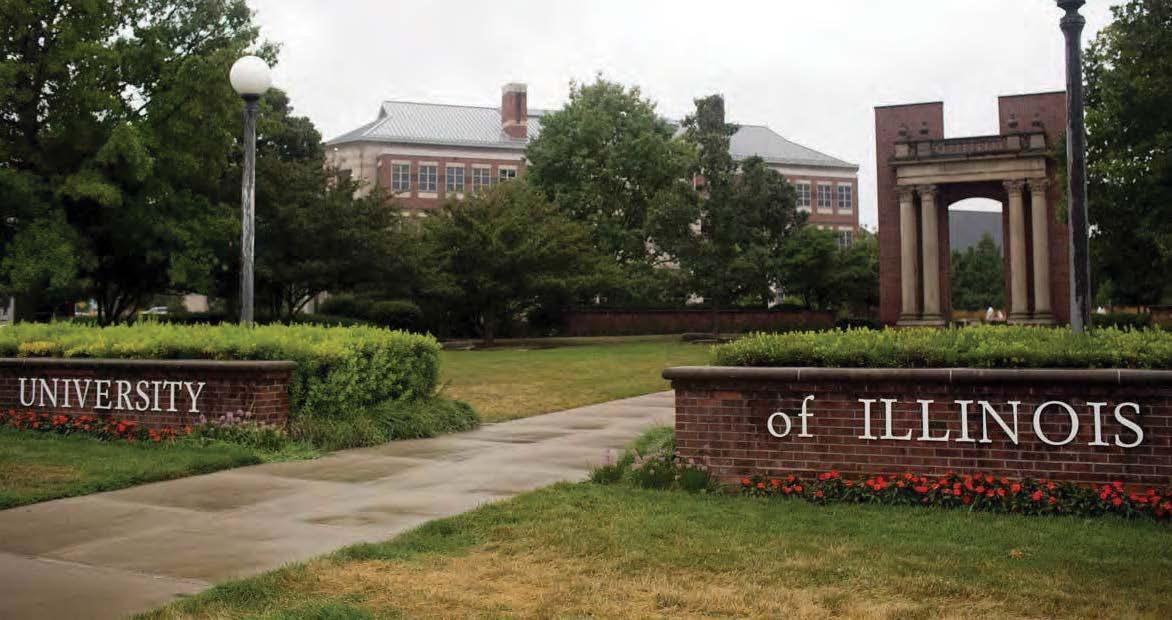
Both companies also are taking advantage of U of I’s City Scholars Program, which gives students in Champaign- Ur bana the opportunity to work in Chicago for a semester. Since it launched five years ago, more than 300 students have interned at 50 companies.
Arnav Shah, a junior computer science major who is working on virtual-reality applications at Deere
cruiting mechanical and electrical engineers from U of I. Now they’re pursuing students in the school’s famed computer science program as they make greater use of software, data and mobile technology to run their businesses and develop digital products. As a result, they’re not only competing for talent with traditional industri -
Caterpillar and Deere are setting foot on campus more often and making jobs more appealing by setting up shop in Chicago. As a result, they’re having more success in meeting their own hiring needs while giving students with highdemand skills more reasons to stay in Illinois instead of leaving for the coasts.
“In the past we didn’t have a focus. We used to tell students we’re a great employer,” Cline says. “We were at recruiting events, but it wasn’t intentional.”
Cat, which has long had a presence in the U of I Research Park alongside other large companies, stepped up its recruiting by sponsoring events such
Since 2019, Cat Digital has hired 132 interns and 64 new grads for full-time jobs. Threefourths of the interns have come from the seven Midwest schools it targeted. The number of full-time hires from those schools has more than tripled.
“We’re seeing a lot of large companies that aren’t well known in the CS space,” says Sally Luzader, who manages corporate relations for Purdue’s computer science department, where Cat and Deere recently have become partners. “If you take a company like Cat or John Deere, they didn’t have as much need for that expertise 10 years ago; or they outsourced a lot of IT functions that they’re bringing back in house.”
Cat and Deere started calling on campus just as big tech companies such as Google and Microsoft began to rely more on virtual recruiting during the pandemic, she adds. With big tech companies cutting jobs or slowing their hiring, industri -
The presence on campus makes a difference, Bhagchandani says. “Maybe if I hadn’t had the chance to meet that recruiter in person, maybe I wouldn’t have been so keen to join Caterpillar.”
It’s just as important that companies set up shop where students want to live. Cat Digital launched in Chicago in 2016. Moline-based Deere recently opened a technology office in Fulton Market, up the street from Google, where it plans to hire 150 tech workers by the end of the year.
“Over the last 10 to 15 years, we realized we were losing great talent, even with universities where we had long-standing relationships, such as U of I,” says Siva Ganesh, Deere’s vice president of information technology. “We were not able to land some of that talent in the Quad Cities.”
Like Cat, Deere has a pres-
“The options here in Chicago are better than Urbana, Des Moines or Moline,” says Arnav Shah, a junior computer science major who is working on virtual-reality applications at Deere. “I get to network here a lot.”
It’s not clear, however, whether the program will reverse the trend of top tech talent heading for the coasts. A recent U of I survey of computer science graduates from UrbanaChampaign found that 38% stayed in Illinois after graduation, 28% took jobs in California and 22% went to work in Washington state.
There’s reason to believe that could change, says Bhagchandani, who graduated in June with a computer engineering degree and has a lot of peers working in Chicago, as well as Boston, New York, Seattle and San Francisco. “Something that changed drastically with COVID: It wasn’t about where the work was. It was more about the kind of work you were doing.”
“THE OPTIONS HERE IN CHICAGO ARE BETTER THAN URBANA, DES MOINES OR MOLINE. I GET TO NETWORK HERE A LOT.”
CLA (CliftonLarsonAllen LLP), Oak Brook

Paul Valaisa has advanced to principal at CLA. With over ten years of construction experience, he specializes in assurance services for companies including general contractors and specialty subcontractors.
Paul works alongside companies with complex multi-entity organizational structures and joint venture arrangements, while also providing consulting and other specialty services.




Kevin Cooke has advanced to principal at CLA. With over eight years of experience working with privately held companies and their owners, he specializes in assurance and consulting services for manufacturing, distribution, and food and beverage companies and is actively involved in food and beverage networks in the Chicagoland area. Explore CLA at CLAconnect.com.
U.S. Bank Private Wealth Management is proud to welcome Ryan Johnson as a Managing Director. In this role Ryan leads a team of wealth management professionals providing customized strategies tailored to our clients’ speci c needs. These strategies encompass Investment Management, Private Banking, Trust and Estate Services and Wealth Planning. Ryan takes the time to understand his clients’ needs and directs his teams of specialists to provide services that help clients work towards their goals.


Artisan Advisors, LLC, Chicago


Artisan Advisors, a consulting rm that specializes in strategic consulting, risk assessment and organizational ef ciency for nancial institutions, welcomes Mike Boettcher, CPA as managing director. A seasoned banking executive with more than 35 years of nancial management experience, Mike’s focus will include asset liability management and capital planning, and he will lead integration with investment bankers, attorneys and accounting rms on transaction and banking related matters.
First Bank Chicago, Northbrook
First Bank Chicago, one of the top ve privately held banks in Chicagoland, announces the promotion of Matthew J. Caja to AVP, Commercial Real Estate Credit Analyst. In this new role, Matt is responsible for preparing nancial analysis and loan presentations, while facilitating loan closings. He also manages and services much of the CRE portfolio. Matt has over 20 years of nancial expertise in commercial loan operations and consumer lending. He joined First Bank Chicago in 2016.
First Bank Chicago, one of the top ve privately held banks in Chicagoland, is pleased to welcome Angela Castaneda to our team as Private Banking Of cer. She is responsible for supporting the Bank’s growth strategy by managing a portfolio of private foundations, business owners, professionals, and multigenerational high-net-worth family of ces. Angela has over 16 years of banking expertise and prior to joining our team worked at JPMorgan Chase Private Client.




Michael Guerra has joined Nicor Gas as vice president of External Affairs. In this role, Guerra will lead all external affairs efforts for the state’s largest natural gas distributor, including regulatory and governmental affairs strategies. Guerra has more than 30 years’ experience working in the energy sector, most recently at Jenner & Block LLC. Previously, he held multiple leadership positions at ComEd, including vice president roles in Regulatory and External Affairs.

TW Chicago, a General Contractor experiencing accelerated growth, is announcing the promotion of Rick Anderson to Vice President of Field Operations and Chris Derks to Vice President and Project Executive. Anderson has developed and manages eld operations, overseeing a staff of 15 Project Superintendents. He also ensures all safety policies and procedures are enforced, contributing to TW Chicago’s exceptional EMR rating. He has been part of the company since 2017. Derks oversees Project Management to guarantee client expectations are exceeded. He has a keen eye for identifying ef ciencies and delivering solutions to reduce the nancial impact of a project. He has been with the company since 2019.
Burke, Warren, MacKay & Serritella, P.C., Chicago
Burke, Warren, MacKay & Serritella, P.C. is pleased to announce that Joshua J. Cauhorn has been elected a director of the rm effective January 1, 2023.
Weyers McKeever Financial Partners, Lake in the Hills

WMFP welcomes Matt McCormick as a Financial Advisor. Matt comes to us with many years of experience. He feels his true passion is providing nancial advice to prepare clients for the future. Matthew is a Registered Representative and Investment Adviser Representative of, and securities and investment advisory services are offered solely by Equity Services, Inc. (ESI), Member FINRA/ SIPC, 1 N Franklin Street. WMFP is independent of ESI. TC130241(1222)1


Mr. Cauhorn represents businesses of all sizes with an emphasis on entrepreneurs and mid-market companies. He focuses his practice on litigation but often acts as an outside general counsel, leveraging the rm’s deep bench of experienced attorneys to provide on-point counsel for every business legal need.
Burke, Warren, MacKay & Serritella, P.C., Chicago
Burke, Warren, MacKay & Serritella, P.C. is pleased to announce that partner Jessica A. Cox has been elected a shareholder of the rm effective January 1, 2023.
Ms. Cox is a member of the rm’s Religious, Tax-Exempt Organizations, Corporate, and Internal Investigations groups. She focuses her practice on risk management, claims resolution, and corporate issues affecting religious, non-pro t, and social service organizations. Her experience includes representing religious organizations.
Wavicle Data Solutions, Chicago

Wavicle Data Solutions welcomes Tony Hoang, Ph.D., as Director of Innovation. Dr. Hoang will leverage his deep experience with endto-end solutions and innovative methodologies to develop and improve client solutions including industry-speci c accelerators. “The Arti cial Intelligence Podcast” host will drive customer thought leadership sessions and engage C-level executives with Wavicle offerings. He joins Wavicle from Slalom Consulting, where he served as the AI SME on the Global AI team.

Burke, Warren, MacKay & Serritella, P.C., Chicago
Burke, Warren, MacKay & Serritella, P.C. is pleased to announce that partner Stephen R. Schuster has been elected a shareholder of the rm effective January 1, 2023.
Mr. Schuster is a member of the rm’s Real Estate and Corporate groups. He has represented clients in transactions involving nearly every aspect of the real estate business, including acquisitions and dispositions, leasing, development, construction, municipal incentives and entitlements, joint ventures, and nance.
Robert W. Krug has been elected to Shareholder of Hughes Socol Piers Resnick & Dym, Ltd. Mr. Krug represents individual clients and corporations in a broad range of immigration matters, including temporary and permanent employment and familybased immigration, asylum, consular processing, and citizenship matters. He has represented clients before the U.S. Department of Homeland Security, the U.S. Department of State, the U.S. Department of Labor, and U.S. consular posts around the world.
Will Trevena joins Chuhak & Tecson as a principal in the Litigation group and has extensive experience in complex commercial litigation, multidistrict litigation in federal court and government investigations. His experience includes developing trial strategy; managing complex discovery; taking and defending depositions; developing expert witness testimony and reports; preparing witnesses to testify at deposition and trial; and responding to government subpoenas and other investigatory requests.

Caryn C. Lederer has been elected to Shareholder at Hughes Socol Piers Resnick & Dym, Ltd. Ms. Lederer is a seasoned litigator, focusing her practice on civil rights, constitutional law, class actions, labor and employment, and whistleblower litigation. Her work has obtained tens of millions of dollars for clients and achieved systemic reform across the country. Ms. Lederer received her B.A. from Brandeis University and her J.D. from the University of Virginia School of Law.
Hughes
Daniel A. Waitzman has been elected to Shareholder at Hughes Socol Piers Resnick & Dym, Ltd. Mr. Waitzman focuses his practice on insurance coverage litigation and general commercial litigation matters. He has signi cant experience representing insurers in coverage disputes nationwide involving long-tail exposure, including bodily injury and property damage related to environmental, mass tort and product liability claims.
Clear Height Properties is proud to announce Arturo Radilla has been hired as Director, Project and Development Services, to gauge asset potential and lead project buildouts. “I love looking at a space and thinking, ‘What can we do here?’ then executing the buildout while adhering to the business plan,” said Radilla. “The rm takes its core values seriously. Many places say that, but you can see Clear Height is different, living those values in everything they say and do.”
Hughes Socol Piers Resnick & Dym, Ltd., Chicago




Mark Weiner has been elected to Shareholder at Hughes Socol Piers Resnick & Dym, Ltd.






He is a veteran trial attorney who focuses on litigation in the personal injury and worker compensation elds. Mr. Weiner received his B.A. from the University of Illinois and his J.D. from the University of Denver School of Law.



ML Realty Partners, Itasca



Tracy Albrecht joined ML Realty Partners as Acquisition Transaction Manager. She will be working with ML Realty Partners’ acquisition, development, and thirdparty teams to coordinate and close business transactions. Ms. Albrecht spent fteen years in diverse commercial real estate roles, most recently at Cawley Chicago. She holds a Bachelor of Science degree from Quincy University.


Dialexa, an IBM Company, Chicago
Dialexa, an IBM Company, is a digital product engineering rm continuing its expansion into the greater Chicago market with the hiring of Robby Schoenhoft as the region’s sales leader. Robby brings 13 years of experience in sales and digital transformation strategy. Most recently at Rightpoint, he was responsible for delivering digital experiences to help clients innovate rapidly and enhance market relevance. Prior, he was a sales lead at Marxent, overseeing delivery of its 3D Cloud™ platform.
With a property-tax snafu at Cook County pressuring already cash-short city pension funds, the Lightfoot administration has injected more than half a billion dollars into employee retirement accounts. Here’s why.
BY GREG HINZWith a property-tax snafu at Cook County pressuring already cash-short Chicago pension funds, City Hall has made an apparently unprecedented injection of more than half a billion dollars into employee retirement accounts.
Mayor Lori Lightfoot’s o ce is con rming that in recent weeks it made $574 million in “voluntary” early payments to funds that cover city police, re ghters, laborers and white collar workers.
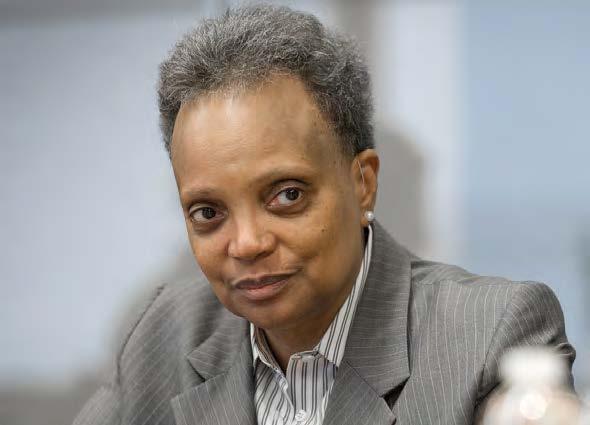
ose payments normally would have come from second-half city property taxes collected by Cook County, which in an ordinary year would have been due around Aug. 1. But after months of feuding between Cook County Assessor Fritz Kaegi and the county Board of Review, which hears appeals of proposed property-tax assessments, the
bills only went out after anksgiving. ey are for payment by Dec. 31, with distribution to the pension systems some time thereafter.
at delay has threatened to squeeze the funds at a di cult time. With the funds collectively having only about 25% of the assets on hand pay promised pensions, the lack of current income from taxes could have forced them to sell investments to raise cash at a time when the stock market is still in a swoon over ination and rising interest rates, e ectively locking in their losses. at worst-case scenario now has been avoided. As rst reported by Bloomberg News, the city has dipped into its accounts to pay the funds now even though the property tax income is not yet in hand.
“In the face of the delayed sec-
ond installment of property taxes which put cash ow pressure on the pension funds, the city of Chicago voluntarily made an early payment of its annual contribution, rather than its standard annual practice to hold onto funds for about a year and a half until the pension contribution is paid,” Lightfoot’s o ce told Crain’s in a statement. “ e money comes from the same annual budgeted payment, but (in 2022) the city paid it earlier to make up for delayed second-installment property tax payments and prevent liquidating assets in a down market. “
e city also is paying a portion of 2023’s required pension payment early, with about $250 million to be given to pension systems on Jan. 3, Lightfoot’s o ce said. But that payment, unlike the $574 million, was expected and approved by the City Council as part of the mayor’s 2023 city budget.
O cials denied the $574 mil-
lion is coming out of “reserves.” But they are not saying if the money came out of other city accounts or has been temporarily borrowed, or if it will strain overall city liquidity.
DISPUTE
e underlying property-tax dispute involves which of two di erent computer systems should be used to con gure bills. ough the bills did go out by the end of the year—avoiding tax problems for property owners on their 2022 federal income tax returns—some county insiders expect the problem to persist
and recur in 2023.
e city, rst under former Mayor Rahm Emanuel and more lately Lightfoot, has been boosting its contributions to the pension funds to the actuarially required level needed to reach a 90% funded ratio of assets to liabilities in coming decades. But that task, which has featured major increases in city property taxes, will become more di cult unless the equities market returns to positive returns.
Without the advance payment, the funds would have su ered a -14.7% return on investments through November, the city says.
BY ANURAG KOTOKYAs travel springs back and even China dismantles the last remaining Covid curbs, one stark truth is beginning to emerge— the world is running desperately short of planes.
With carriers from United Airlines Holdings Inc. to Air India Ltd. placing, or looking to place, jet orders that number in the hundreds, Boeing Co. and Airbus SE are crowing variously about blockbuster deals. But supply chain constraints mean those planes won’t be delivered until possibly years down the track— Je eries LLC estimates there’s an order backlog of 12,720 aircraft currently.
All that means the sky-high airfares that people have complained bitterly about over the past few months are here to stay, and things could get worse before they get better.
“People got used to lower fares during the pandemic and China’s reopening will make it worse,” Ajay Awtaney, the founder of frequent ier website LiveFromALounge.com, said. “It’s not just a shortage of planes but also other factors like oil prices.”
Get access to all our coverage with a subscription to Crain’s Chicago Business.
While one cashed-up airline in a particular jurisdiction may have the nancial wherewithal to bring prices down, that would likely cause other carriers to stumble, “leading to even higher fares in the long run,” Awtaney said.
Boeing and Airbus, the planemaking giants that largely enjoy a duopoly supplying passenger jets, are sold out for their most popular single-aisle models through until at least 2029.
Compounding the demand from airlines as people once again take to the skies with a vengeance and carriers look to refresh aging eets are supply chain challenges—everything from getting the necessary components to labor shortages.
Airbus in December dropped its 2022 delivery goal of 700 jetliners citing supply chain issues and has previously warned that a jump in energy costs will weigh particularly hard on smaller, power intensive producers, such as those making castings and forgings.
According to the founder of Air Lease Corp. and a legendary name in aviation, Steve UdvarHazy, every jet delivered to one of the world’s largest lessors
over the past two years has been late.
“We haven’t gotten one airplane on time, whether it’s a 737 Max or a 787 or an A330, A350,” he said. “And the worst has been the A321neo. We’ve had delays of as much as six or seven months comparing contract delivery month to actual delivery. It’s a combination of supply chain issues, ramping up too quickly and shortage of labor. Production workers can’t work from home. So it’s been a real problem.”
e thousands of planes that carriers stored in deserts around the world, unsure of when demand would return as travel collapsed in the wake of Covid and countries shut borders, are also contributing to the shortage. Hundreds haven’t been brought back into eets, either because they now need heavy duty maintenance after so long not being used or because airlines plan on phasing them out and haven’t bothered slotting them into their schedules again.
e end result for the ying public is eye-watering fares, which could rise even further as business travel returns and more people are willing to treat themselves as they holiday abroad for the rst time in years.
It could also mean ying in older planes.
“As a last resort, we can see airlines extending ownership cycles,” said Sunny Xi, a Singa-
pore-based principal at consultancy Oliver Wyman. Airlines in Asia historically plan eets around 12-year cycles, which is lower than in most other regions. But during the restructurings that carriers have gone through over the past few years, “several airlines have extended existing eets and could do so again in the future,” he said.
For Boeing and Airbus, delivering the planes they’ve sold on time is now problem number one.
Airbus is already seeing airlines reluctant to place new orders for jets, considering it has a backlog of more than 6,100 planes for the A320neo family that would take eight years to ll. While it’s long touted its plan to ramp up production to as many as 75 A320 jets a month, it’s now
pushed back that goal to the middle of the decade.
Investors in Boeing, which had announced around 850 gross orders in 2022, including the mid-December United Airlines deal, are meanwhile concerned on the slow progress the US planemaker has made in resolving its supply chain snarls and speeding work in its factories, RBC analyst Ken Herbert said.

e one bright spot? Employees working in the sector probably won’t be laid-o any time soon.
“ e order backlogs are big enough that a recession wouldn’t really matter right now,” said George Ferguson, an analyst with Bloomberg Intelligence.” Manufacturers and airlines will “hold on to people even if there are small hiccups.”
Architect of the Year
Commercial Development of the Year
Community Impact Project / Special Achievement of the Year
Consultant of the Year Award
Contractor of the Year Deal of the Year
Developer of the Year Industrial Broker of the Year
Institutional Investment Broker of the Year

Interior Design Firm of the Year
Office Broker of the Year

Office Proper ty Representative of the Year
Private Capital Markets Investment Broker of the Year Project Manager of the Year Proper ty Management Company of the Year Redevelopment of the Year Retail Broker of the Year
Restaurants are increasingly closed during the day, but these eight downtown spots remain open for a perfect power lunch I
The lunch business at downtown restaurants has not recovered from the pandemic. With return-to-o
and sit-down restaurants alike are struggling to stay open during the day. But the appeal of a
there are plenty of restaurants still open for a midday meal.
Here are eight lunch spots open now for the perfect midday client meeting:
180 N. Field Blvd.
Opens 11 a.m. Tuesday-Friday
Avli on the Park is tucked away just north of Millennium Park in the old III Forks steakhouse space. Wine, olive oil and other ingredients are imported from Greece, and diners can order a whole sh for the table or lamb chops to share.
145
Opens
At e Dearborn, which opened in Block 37 in 2016, professional service makes a business lunch doable. Most tables are elbow to elbow, but a few curtained booths o er privacy. e food—running from a burrata appetizer with in-season beets and tomatoes to a Chicago-style cheesesteak—is the brainchild of “Top Chef” alumnus Aaron Cuschieri.
130
Opens
Rosebud Randolph, located in the Prudential Plaza space once lled by Tavern on the Park, spans three stories and o ers views overlooking Millennium Park. One of the nine Rosebud restaurants across the city, the Randolph location’s lunch menu o ers a variety of the group’s Italian staples, from skirt steak to chicken vesuvio.
BY JACK GRIEVEThe
400 N. Clark St.
Opens 8:30 a.m. Monday-Friday
Located in River North, The Smith is a bit more of an upbeat option. Leatherupholst ered banquettes, black-andwhite mosaic floors and bare-wood tables give it a brasserie-like look. Lunch runs until 5 p.m., but you can catch the breakfast menu if you pop in before 11:30 a.m.


Grill on 21
208 S. LaSalle St.
Opens 11 a.m. Monday-Friday
e namesake of Grill on 21 comes from its location on the 21st oor of the LaSalle Chicago hotel. Branding itself as a “modern approach to a classic steakhouse,” the lunch menu ranges from the 8-ounce let mignon to a tartare bar.


Opens 11 a.m. Monday-Friday
When Prime & Provisions opened in 2015, Crain’s described the hip spot as “the millennial’s steakhouse.” It’s a bit less buttoned-down than some other Chicago steakhouses, but the high-spirited hubbub, generous spacing between seats and the servers’ lavish attention on diners are perfect accompaniments to power lunching.
135
Opens
Roanoke resides in the Residence Inn smack in the middle of the Loop. Ample table space and room divisions keep sound manageable, and decor sporting a palette of browns gives the restaurant an elegant feel.

Opens
Siena Tavern, located in River North, boasts a stylish but casual 200-seat dining room. e restaurant is known for its made-from-scratch menu featuring Italian cuisine from “Top Chef” fan favorite Fabio Viviani. Signature items include tru e gnocchi, coccoli and wagyu beef meatball.



Exelon isn’t going anywhere.
Calvin Butler, who with the new year takes the reins as CEO of the giant utility holding company, is moving back to Chicago, and the company “is and will remain” headquartered here, a spokeswoman said Jan. 3.
Butler, 53, served as former CEO Chris Crane’s chief operating officer and had been based in Baltimore. With the exception of Chicago’s Commonwealth Edison, every electric utility Exelon owns is in the East, including Baltimore
Gas & Electric.
So there was some trepidation in Chicago about the future of one of its largest corporate headquarters. Exelon spun o its power-generation business last year, which included the nation’s largest eet of nuclear plants. at unit, now dubbed Constellation Energy Group, was headquartered in Baltimore.
Butler’s relocation, though, is something of a homecoming. He started his career at Exelon here in 2008 as a lobbyist for ComEd. He quickly ascended
and moved to Baltimore to lead BGE after Exelon’s 2012 acquisition of BGE parent Constellation Energy.
He’s a graduate of Bradley University in Peoria and worked in Illinois before joining Exelon.
Butler is jumping right into the city’s civic scene. He’s joining the Civic Committee of the Commercial Club of Chicago. He continues as a board member of Bradley University.
Butler now becomes the country’s seventh Black CEO of a Fortune 500 company,
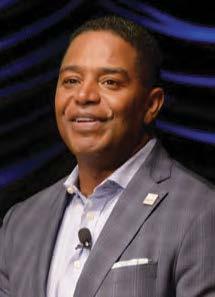
the spokeswoman said. He immediately becomes one of Chicago’s most important Black business gures as well.
He joins Walgreens Boots Alliance CEO Roz Brewer as one of two Black CEOs of a top 25 publicly traded company in Chicago.
Crane retired at the end of 2022 due to health issues after a decade as CEO of Exelon.
e company describes itself as the nation’s largest conglomeration of utilities, with more than 10 million customers. It owns utilities based in Philadelphia and Washington, D.C., as well as ComEd in Chicago and BGE.












An examination of billing policies and practices at more than 500 hospitals by Kaiser Health News shows widespread reliance on aggressive collection tactics I
BY NOAM N. LEVEYDespite growing evidence of the harm caused by medical debt, hundreds of U.S. hospitals maintain policies to aggressively pursue patients for unpaid bills, using tactics such as lawsuits, selling patient accounts to debt buyers, and reporting patients to credit rating agencies, a Kaiser Health News investigation shows.
The collection practices are commonplace among all types of hospitals in all regions of the country, including public university systems, leading academic institutions, small community hospitals, for-profit chains, and nonprofit Catholic systems.
Individual hospital systems have come under scrutiny in recent years for suing patients. But the KHN analysis shows the practice is widespread, suggesting most of the nation’s approximately 5,100 hospitals serving the general public have policies to use legal action or other aggressive tactics against patients.
And although industry officials say they are careful about how they target patients for unpaid bills, few institutions have renounced what federal rules call “extraordinary collection actions,” even as medical debt forces millions of Americans to cut back on food and other essentials, drain retirement savings, and make other difficult sacrifices.
At the same time, a majority of hospitals scrutinized by KHN ef-
“Diagnosis: Debt” is a reporting partnership between KHN and NPR exploring the scale, impact and causes of medical debt in America.
The series draws on original polling by KFF (Kaiser Family Foundation), court records, federal data on hospital nances, contracts obtained through public records requests, data on international health systems, and a yearlong investigation into the nancial assistance and collection policies of more than 500 hospitals across the country.
Additional research was conducted by the Urban Institute, which analyzed credit bureau and other demographic data on poverty, race, and health status for KHN to explore where medical debt is concentrated in the U.S. and what factors are associated with high debt levels.
The JPMorgan Chase Institute analyzed records from a sampling of Chase credit card holders to look at how customers’ balances may be a ected by major medical expenses. And the CED Project, a Denver nonpro t, worked with KHN on a survey of its clients to explore links between medical debt and housing instability.
KHN journalists worked with KFF public opinion researchers to design and analyze the “KFF Health Care Debt Survey.” The survey was conducted Feb. 25 through March 20, 2022, online and via telephone, in English and Spanish, among a nationally representative sample of 2,375 U.S. adults, including 1,292 adults with current health care debt and 382 adults who had health care debt in the past ve years. The margin of sampling error is plus or minus 3 percentage points for the full sample and 3 percentage points for those with current debt. For results based on subgroups, the margin of sampling error may be higher.
Reporters from KHN and NPR also conducted hundreds of interviews with patients across the country; spoke with physicians, health industry leaders, consumer advocates, debt lawyers and researchers; and reviewed scores of studies and surveys about medical debt. KHN.org/news/tag/diagnosis-debt
where a trip to the hospital can not only produce jaw-dropping bills but also expose patients to legal risks that jeopardize their livelihood.
More than two-thirds sue patients or take other legal action against them, such as garnishing wages or placing liens on property.
A similar share of the hospitals report patients with outstanding bills to credit rating agencies, putting patients’ credit scores
Douglas described one older woman she worked with who was afraid to seek nancial assistance from a hospital because she worried the hospital would seize her home if she couldn’t pay.
The impact of these collection practices can be devastating.
Across the U.S. health care system, medical debt is taking a fearsome toll on patients, forcing more than half of adults with health-related debt to make difficult sacrifices, including taking on extra work, changing their living situation, or delaying their education, a KFF poll conducted for this project found.
Nick and Elizabeth Wo odruff also had their faith shaken by hospital debt collectors. Nick was sued by Our Lady of Lourdes Memorial Hospital in Binghamton, New York, where he’d received care for a dangerous foot infection.
Despite having insurance through Nick’s work at a truck dealership, the couple were buried in bills, forcing them to withdraw money from their retirement accounts and borrow from family. When they still couldn’t make all the payments, the hospital, a Catholic institution owned by the Ascension chain, took them to court, and in 2018 they were ordered to pay more than $9,300.
fectively shroud their collection activities, publicly posting incomplete or in many cases no information about what can happen to patients if they can’t pay. These are among the findings of an examination of billing and financial aid at a diverse sample of 528 hospitals across the country. Over the past year, KHN investigated each of these hospitals, reviewing thousands of pages of policies and other documents. The reporting also included thousands of telephone and email inquiries and interviews to obtain and clarify how hospitals handle patients with unpaid bills.
Some hospitals did not respond to multiple requests for information. But KHN was able to gather details about most. From them, a picture emerges of a minefield for patients
and their ability to rent an apartment, buy a car, or get a job at risk.
A quarter sell patients’ debts to debt collectors, who in turn can pursue patients for years for unpaid bills.
About 1 in 5 deny nonemergency care to people with outstanding debt.
Nearly 40% of all hospitals researched make no information available on their websites about their collection activities, although KHN in some cases was able to obtain the information through repeated requests.
“People don’t know what’s going to happen to them. It can be terrifying,” said Tracy Douglas, a consumer attorney at Bet Tzedek Legal Services in Los Angeles.
Basit Balogun was a freshman at Lafayette College in Pennsylvania when a heart attack caused by a previously undetected birth defect landed him in the hospital. Because his insurance had lapsed, Balogun, whose family is from Nigeria, was hit with bills amounting to tens of thousands of dollars.
When he couldn’t pay, the hospital reported him to a credit agency, which he discovered only after he’d graduated and was trying to rent an apartment in New York City. “I kept getting rejected and rejected,” Balogun recalled. “I was desperate.”
Balogun, a prize-winning student, landed a job at banking giant Goldman Sachs and used his signing bonus to begin paying down the debt. Five years later, he’s still making payments. Now Balogun said he thinks twice before going to the doctor.
“This hospital boasts Catholic values and states they take pride in their charity work,” said Elizabeth, a social worker, “but I am taken aback by how callous they have been.”
Ascension spokesperson Nick Ragone told KHN that the chain, America’s second-largest Catholic system, “ceased taking legal action against patients for unpaid bills starting in October 2019.” But New York court records show that Lourdes continued to le legal actions against patients until at least 2021.
Hospital spokesperson Lisa Donovan subsequently told KHN this was an “administrative oversight.” “Lourdes is reviewing matters to ensure that all legal activities have been disposed/dismissed,” she said in an email.
Many hospital officials say they are obligated to collect what patients owe. “We don’t

INTERACTIVE GRAPHIC: Will your hospital help with your bill? Will it sue you?
KHN investigated the collection policies of more than 500 U.S. hospitals and found that many will aggressively pursue patients who cannot pay their bills.
ChicagoBusiness.com/ HospitalBills
want to promote the concept that medical bills just go away, especially for those who are able to pay,” said Michael Beyer, who oversees patient accounts at Sanford Health, a South Dakota-based nonprofit with clinics and hospitals across the U.S. and abroad.
Hospital leaders also stress the industry’s commitment to helping low-income patients and others who can’t pay their bills. “Hospitals are doing a lot,” said Melinda Hatton, general counsel at the American Hospital Association. “Is it perfect out there? No. But I think they should get credit for trying pretty hard.”
Charity care is offered at most U.S. hospitals. And nonprofit medical systems must provide financial aid as a condition of not paying taxes, a benefit that saves the industry billions of dollars annually.
At many medical centers, however, information about financial assistance is difficult or impossible to find. About 1 in 5 hospitals researched by KHN, including public university systems in five states, don’t post aid policies online.
The University of Mississippi Medical Center disclosed its policy only after KHN filed a public records request. Many hospitals prominently place a link on their homepages for patients to pay a bill, but then require people to click through multiple pages to find information about financial aid.
Visitors to the website of Opelousas General Health System in Louisiana who click on the “Patient Resources” tab can learn that the Lil’ General Café serves panini and pancakes, but they
‘Taken aback by how callous they have been’
“NOBODY
Mark Rukavina, formerly with the nonprofit Community Catalyst
won’t nd any information about getting help with medical bills.
Applying for aid can also be extremely complicated, requiring patients to produce exhaustive amounts of personal financial information, KHN found. Standards vary widely, with aid at some hospitals limited to patients with income as low as $13,590 a year. At other hospitals, people making five or six times that much can get assistance.
About two-thirds of the hospitals researched by KHN require patients to report their assets, sometimes in great detail. Centura-St. Anthony Hospital, a Catholic medical center in suburban Denver, notes in its policy that in reviewing patient assets it may count crowdfunding or social media accounts patients have set up to help pay bills. Other hospitals ask patients to report the make, model, and year of cars they have.
“The system doesn’t work,” said Jared Walker, founder of Dollar For, a nonprofit that has helped thousands of people across the country apply for financial aid. “Patients can’t find the information they need. Half the time, when they do apply for assistance, they never hear back. Basically, hospitals do what they want, and there is no accountability.”
In many cases, patients who should qualify for assistance are instead targeted by bill collectors, whether by accident or by design.
“Every week or so we get a call from someone who should have quali ed for aid, but they weren’t
enrolled,” said Michele Johnson, executive director of the nonpro t Tennessee Justice Center.
A 2019 KHN analysis of hospital tax filings found that nearly half of nonprofit medical systems were billing patients with incomes low enough to qualify for charity care. Earlier this year, Washington state sued hospitals belonging to the nonprofit giant Providence after uncovering that the system trained its collectors to aggressively pursue even patients who should have qualified for aid.
In 2017, the state also successfully sued CHI Franciscan, another Catholic system that authorities found wasn’t properly o ering charity care. To settle that case, CHI Franciscan, now part of the mammoth Chicago-based chain CommonSpirit Health, provided more than $40 million in debt relief and refunds and helped patients repair their credit, according to the state attorney general’s o ce.
But CommonSpirit hospitals still report patients to credit rating agencies, according to the chain’s published policies.
Credit reporting, a threat that is supposed to induce patients to pay, is the most common collection tactic, KHN’s analysis and other data shows. Fewer patients are actually taken to court.
But more than two-thirds of policies obtained by KHN allow hospitals to sue patients or take other legal actions against them, such as garnishing wages or placing liens on property.

This includes half the hospitals earning top spots on the U.S. News & World Report’s annual scorecard—medical centers such as the Mayo Clinic,
Cleveland Clinic, and Massachusetts General Hospital.
Patients at public university medical systems in at least 23 states, including Colorado, Georgia, Minnesota, Tennessee, and Wisconsin, can be sued. In several states, including North Carolina, Ohio, and New York, public university systems refer patients to other state agencies for legal action or withholding tax refunds.
Major nonprofit systems such as Kaiser Permanente, Trinity Health, and Northwell Health will also take legal action against patients, according to their policies or spokespeople. America’s largest for-profit hospital chains—HCA Healthcare and Tenet Healthcare— don’t post collection policies, but don’t sue patients, according to spokespeople. Other investor-owned chains, such as Community Health Systems, will take patients to court.
Hospitals with policies allowing them to sue patients tend to have only slightly higher pro ts than those that don’t sue, KHN found by comparing nancial data that hospitals submit annually to the federal government.
The same is true of hospitals that sell patient accounts, a practice in which medical providers typically package a group of outstanding bills and sell them to a debt-buying company, usually for a small percentage of what is owed. Debt buyers then keep whatever they can collect.
Officials at many hospitals that sue say they rarely take that step. And spokespeople at several medical systems said they have effectively stopped taking
patients to court even if their policies still allow it.
But in many cases, hospital policies haven’t changed, leaving patients in legal jeopardy, as was the case at the Ascension hospital in New York that continued to le lawsuits against patients.
A few hospitals have barred all aggressive collections, including two of California’s leading academic medical centers at UCLA and Stanford University. So too have the University of Vermont Medical Center and Ochsner Health, a large New Orleans-based health system.
That can make a difference for patients, data suggests. A recent analysis by the Consumer Financial Protection Bureau found that while medical debt is widespread across the App alachian region, one notable exception is western Pennsylvania.
Residents there have fewer past-due medical bills on their credit reports than the national average. This region is dominated by the Pittsburgh-based UPMC hospital system, which prohibits aggressive collection actions, including reporting patients to credit agencies.
In neighboring West Virginia, by contrast, the incidence of medical debt is more than 50% above the national average, the CFPB found. That state’s largest hospital system—operated by West Virginia University—not only reports patients to credit agencies but will also sue patients, garnish their wages, and place liens on property.
Elected officials in some states have begun to put limits
on hospital bill collecting. In 2021, Maryland barred hospitals from placing liens on patients’ homes and protected low-income patients from wage garnishments. California recently restricted when hospitals could sell patient debt or report patients to credit bureaus.
But these states remain the exception. And hospitals that have voluntarily given up aggressive collections are in the minority: Just 19 of the 528 hospitals researched by KHN have publicly posted policies barring “extraordinary collection actions.”
Mark Rukavina, who spent decades at the nonprofit Community Catalyst working to expand protections for patients with medical debt, said that is why federal action is needed to rein in hospitals and other medical providers everywhere.
“Nobody should be denied care because they have an outstanding medical bill,” he said. “Nobody should have a lien on their home because they got sick.”
Noam N. Levey is a senior correspondent at Kaiser Health News. e researchers who worked on this story were KHN writer Megan Kalata and Dr. Margaret Ferguson, Anna Back, and Amber Cole, who were students at the Milken Institute School of Public Health at George Washington University.
KHN is a national newsroom that produces in-depth journalism about health issues. Together with Policy Analysis and Polling, KHN is one of the three major operating programs at KFF (Kaiser Family Foundation). KFF is an endowed nonpro t organization providing information on health issues to the nation.






Crain is looking for a Digital Analytics Manager to join a growing Data & Analytics team. We support all the Crain brands (AdAge, Automotive News, and Crain’s Chicago—among others) with actionable intelligence that helps drive revenue and grow the business. The team is responsible for mining our various data sources to generate actionable insights that increase subscriber engagement, drive higher conversion rates, increase loyalty, and create new revenue opportunities. Join a team that’s constantly identifying ways to leverage our best-inclass content to continue the expansion of our fast-growing subscription business.
Visit crain.com/careers/ for more information and available positions.









Staf ng Industry Analyst has a unique opportunity for a senior executive to make an immediate impact on a dynamic industry. You will join a group of dedicated business professionals who, together, constitute the premier source of research, information and analysis on the staf ng industry, contingent workforce management and the workforce solutions ecosystem. In the role of SME Research Director, you will lead and coordinate SIA’s research focused on small and medium sized staf ng rms (annual revenue below $75 million).
Visit crain.com/careers/ for more information and available positions.

 BY DANNY ECKER
BY DANNY ECKER
Related Midwest has cast aside its plan for a big apartment and hotel complex in the Fulton Market District in favor of a more audacious post-pandemic gamble: building a new office tower.

The developer this week is slated to go before the Chicago Planning & Development Department’s Committee on Design with a proposal to build a 41-story, 1 million-square-foot office building near the doorstep to the former meatpacking neighborhood at 725 W. Randolph St., Related CEO Curt Bailey confirmed. The new plan is a major pivot from the mixed-use project Related won City Council approval for in 2020 to develop on the site, which would have featured an Equinox Hotel & Club, 370 apartments and office space across a pair of high-rises atop a podium structure.
e revision comes at a challenging time for the downtown o ce market. e amount of available o ce space in the city sits at an all-time high after more than two years of companies embracing remote work and shedding unwanted workspace. at backdrop makes a new o ce tower proposal look risky, especially when Related already had the city’s sign-o on a predominantly residential building at a time when demand for downtown apartments is soaring.
But Bailey is betting that the Randolph site’s proximity to trendy Fulton Market restaurants and hotels, the Kennedy Expressway and West Loop train stations makes it the ideal site for offices, especially as companies flock to the newest and most updated office buildings in the city with an eye on talent recruitment and getting workers to show up.
“We really sat back after COVID and said, ‘What really is the best use of this site?’ . . . I think we and our partners on this and the experts on the leasing side in the o ce space said this is the best o ce site in Chicago,” Bailey said. “ is is going to be a place workers want to go to, spend time at, collaborate at—there is not a lot of that, and certainly very little available in the market.”
The developer is also playing up the project’s 11,500 square feet of public open space, which would include the removal of a median near the middle of Randolph Street to create a plaza that Bailey describes as “an announcement to Fulton Market as you come over on Randolph,” and an example he hopes will set a precedent for future changes to the street.
The tower was designed by architecture firm Kohn Pedersen Fox, which worked with Related’s parent company on the Hudson Yards megadevelopment in New York City. The Fulton Market project would be Related Midwest’s first big office development in Chicago, though the firm has been one of the most active real estate players downtown in recent years with residential high-rises and its ambitious plan for The 78 megaproject along the South Branch of the Chicago River.
Related is also on track to complete a 43-story, 300-unit apartment building at 900 W. Randolph St. later this year, which will stand as Fulton Market’s tallest building when completed.
the office tower it owns at 10 S. Dearborn St.
Related has hired Chicago-based Telos Group to oversee leasing on the project.

Bailey sees dynamic office buildings as a key to restoring the vibrancy of downtown as the effects of the pandemic wane. “The more of that we can create in Chicago, the more restaurants will be open at lunch, the more this will be a place where everybody wants to be downtown again, the more it will be a safe environment,” he said. “It’s like a virtuous circle. Building new office space that people want to commute to and spend time in (will) create a better downtown.”
Connect
Related’s new design includes 931,000 square feet of o ces in a tower on the northern portion of the site, stepping down with larger oorplates on lower levels. Several oors would feature private terraces and loggias or indoor-outdoor amenity spaces. e building’s rst ve oors would stretch 50,000 square feet with a fth- oor rooftop pool for o ce users, a 17,000-square-foot restaurant and a two-story agship Equinox Fitness Club & Spa.
Related will need the City Council’s Zoning Committee and the full City Council to approve the new 725 W. Randolph plan in order to move forward. Bailey did not provide an estimated cost of the project, but said it would likely take about three years to build and that Related would likely need to pre-lease a portion of the building in order to secure nancing to begin construction.
Bailey said the firm has not lined up an anchor tenant, though people familiar with the plan have speculated Related was positioning itself to make a play for JPMorgan Chase, which has spent several years exploring options to relocate from

The share of available office space downtown at the end of the third quarter stood at an alltime high of 21.3%, inflated by a surge of sublease offerings over the past year, according to data from real estate services firm CBRE. But the pain has been uneven for landlords: Average vacancy at top-tier, or Class A, office buildings dropped to 14.7% from 17% during the 12 months ending in September, CBRE data shows. Vacancy in Class B buildings downtown increased over that span to 22% from 19%.
Still, Related isn’t the only developer pursuing tenants with a proposal for a big new office project. Developer John Buck is on the same hunt to lease up a two-tower, 1.5 million-squarefoot office building it has proposed across the highway from Related’s site at 655 W. Madison St. Further south near the Old Post Office, New York developer 601W is revamping a 700,000-square-foot former Northern Trust office building at 801 S. Canal St. into a modern, multitenant office property.
momentum of one of the fastest-growing o ce destinations in the country. Traffic congestion has plagued Fulton Market for years as Google and McDonald’s led a charge of corporations into the neighborhood, an issue likely to be compounded by thousands of new residents expected to pour in this decade.
The latest development proposals put key decisions before city planners about the future of a neighborhood that is drawing in companies, new tax revenue and a multitude of jobs at a time when much of Chicago’s urban core needs a post-COVID rebirth. Telling developers to scale back their plans jeopardizes that growth. Yet allowing so many more large, dense buildings without improving transportation to and among them could also curb Fulton Market’s gains if companies start to see access and a thin transportation skeleton as obstacles to employee recruitment and retention. And if major new infrastructure investments are made, planning officials face the tricky task of adding enough of it to the corridor without disrupting the post-industrial, pedestrian-friendly character that has fueled its rise.
“The city needs to pick up the pace on investing in downtown-type (transportation) improvements” in Fulton Market, says Joe Schwieterman, director of the Chaddick Institute for Metropolitan Development at DePaul University.
Companies like Boston Consulting Group and a urry of smaller rms that continued the corporate migration to Fulton Market during the pandemic show that density and congestion can be a good thing at a time when other parts of downtown are struggling to recapture their vibrancy. But some office leasing agents in the district say commuting challenges and traffic congestion are problems for prospective tenants worried about how their employees will get there. Fast-growing tech company Fetch recently abandoned plans for a new Fulton Market office for that very reason, choosing a building next to Ogilvie Transportation Center instead. Even Google’s decision to plant its flag at a redeveloped James R. Thompson Center—perhaps the best location in the city for public transportation access—highlights the limits of Fulton Market’s growth.
e city’s planning department helped fast-track Fulton Market’s densi cation by rezoning much of the area in 2016 and 2017 to allow large towers. But an updated framework plan for Fulton Market approved in early 2021 acknowledged the challenge ahead. e report noted the Chicago Department of Transportation will continue to study tra c issues once “regular daily patterns return, post-COVID” and outlined some steps that could modernize infrastructure after a seven-year stretch in which 43 projects in the corridor totaling $14 billion in costs were approved by the City Council. Adding sidewalks, improving lighting, building more bike lanes and the eventual addition of a new Metra station near Ogden Avenue at the corridor’s western end were listed as top priorities.




e city is in the midst of other projects
and analysis, such as a $600,000 design and installation of a new tra c signal at the tra c-plagued intersection of Halsted and Hubbard streets, an $850,000 study and design of improvements to existing at-grade crossings along Metra tracks running through the neighborhood, and a $500,000 study of ways to overhaul Randolph Street as a more dynamic and practical thoroughfare along Fulton Market’s southern edge. CDOT also is mulling conversions of some two-way Fulton Market streets to one-way to help improve tra c ow and alleviate double-parking issues
considered a positive instead of a problem.
“People looking to live and work in the city aren’t really looking for a place saturated with cars,” O’Malley says, adding that creating more parking options tends to lead to more clogged streets. “We need to make sure (our) policies support that. We don’t want the car to ruin the very thing we’re trying to develop here.”
ing open space and improving sidewalks along their properties “to make sure that each project is really going to help this community.”
in a neighborhood that has few large alleys for loading.
But the north star for all discussions around the future of transportation in the neighborhood is ensuring that it evolves as an “inviting, walkable space” with a wide mix of transportation options, says CDOT Managing Deputy Commissioner Kevin O’Malley. A relative lack of surface parking lots and parking garages, he says, should be
Lightfoot last month signaled the city’s commitment to new infrastructure investments by extending the life of the Kinzie Industrial Corridor tax-increment nancing district for another 12 years. e TIF district, which has more than $50 million available for new projects, according to the city’s most recent TIF projection report, stands to be the most important source of funding to upgrade Fulton Market’s infrastructure. Other money will likely come from millions of dollars contributed by Fulton Market developers into a local impact fund in exchange for the rights to build larger and more dense buildings in the neighborhood.
Planning Department Deputy Commissioner Cindy Roubik says her sta is also pushing developers to do their part by designing drop-o zones for cars, maximiz-
Still, some in the neighborhood worry that pieces of the community bene t investments developers agree to make when their projects are approved—things like new light xtures and trash cans and nancial contributions to help with increased city services—take too long to be ful lled or are not completed.
e West Central Association, a neighborhood group that serves as the chamber of commerce for the city’s Near West Side, plans to formally review Fulton Market planned development agreements approved over the past few years to ensure developers’ community commitments are being met, says Carla Agostinelli, the group’s director of development and community partnerships. e group is now building an online dashboard for residents to more easily track such commitments.
“We need to create a tail to these dollars,” says Agostinelli, who previously led the West Loop Community Organization. “We need a better tail to Fulton Market and its impacts, both positive and negative. Nobody is really talking about the negative yet.”
O’Malley, CDOT managing deputy commissionerONNI GROUP/SCB CEDAR STREET/SCB
according to lings.
Chase still has far and away the most locations of any bank in the Chicago market overall.

“In the Loop ZIP codes . . . we proudly serve the needs of our customers with six branches and 44 ATMs, and across Chicagoland we have more than 300 locations—45% more than the next-closest bank,” Maria Holmes, Chase’s regional director overseeing the Chicago area branch network, says in an emailed statement.
But, she adds, “Our goal is not to have the most branches in Chicago—although we do, by a fair margin—but to have the right branches, in more communities, serving the financial needs of our customers.”

Chase has pruned its vast Chicago-area branch network substantially over the past several years, as have many of its competitors looking to cut costs and respond to changing consumer behavior. But the bank also remains committed to brick and mortar, opening new locations in what is one of its most mature markets.
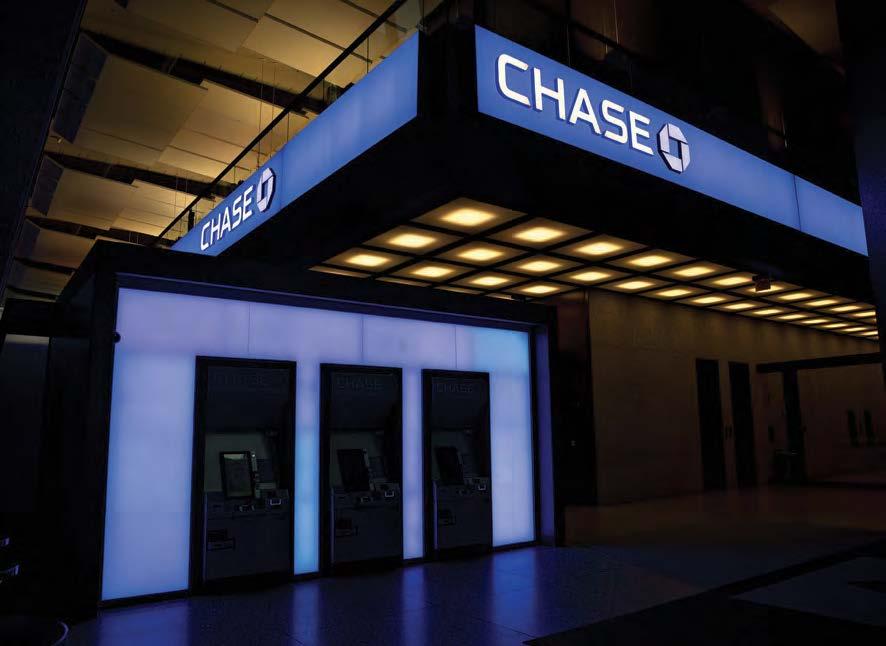
In 2022, Chase opened four
new area branches while closing 13, including the four downtown. Among the new locations were a Bucktown branch at Damen and North avenues and a Fulton Marketadjacent branch at Randolph and Morgan streets, according to filings.
“Branches remain an important part of how we serve our customers, and customers are engaging with our branches differently,” Holmes says. “While teller transactions are down, banker meetings and calls are up meaningfully. As a result, our bankers are identifying and serving more client needs, with banker productivity up 20% since 2017. . . .In a mature footprint like Chicago, while we’ve consolidated our branch count in recent years because of the proximity of some of our branches, our deposit share has increased significantly.”
But how do Chase’s recent moves reflect its views on the future of downtown Chicago?
Holmes doesn’t respond directly to that question.
Traditionally, the Loop has been home to numerous bank branches, as institutions sought to offer convenience to downtown workers and access to affluent customers. With re -
mote work upending that dynamic, downtown retailers are faced with deciding whether to hold on in expectations that traffic returns or consolidate operations and cut costs. Banks
are no different.
Competitors of Chase so far largely have retained their business-district presences, even as they’ve consolidated branches elsewhere in the city
and suburbs.
As of June 30, there were 73 bank branches in the six zip codes making up downtown Chicago, according to the FDIC.

 BY DENNIS RODKIN
BY DENNIS RODKIN
When a Wilmette couple envisioned a home for their family of seven, it was essential to reserve a space “where we can sneak away, shut the doors and have together time,” Lindsay Avner Kaplan says of the round library that is part of the parents’ bedroom suite she shares with her husband, Gregg Kaplan.







A circle set into a square lined with books, the room is one of many winning design features that the architects at Morgante Wilson, an Evanston rm, used to make the Kaplans’ house on Lake Street singular. ere’s also a gracious staircase that winds like a nautilus up to the top of the house, a U-shaped oorplan that gives some rooms windows on three sides and handsome ourishes like the herringbone-patterned brick replace wall in the sunroom.
Gregg Kaplan, who founded Redbox movie rentals in 2002 and now is CEO of Dentologie, the Chicago-based chain of dental o ces, was widowed with three children when he married Lindsay Avner, founder of Bright Pink, a breast and ovarian cancer resource center. Together, they added two more children to the mix, which meant they’d need a lot of house.
Avner Kaplan says they wanted the house—with seven bedrooms and about 10,500 square feet on a little over half an acre—to be “warm and family friendly, with as much light in the interior as possible, because the gray winter sucks the life out of us.”
On a lot that is midway between two of Wilmette’s best attributes—the lakefront Gillson Park and the restaurant array and Metra station in central Wilmette—they built a house whose red brick and white Georgian style ts in among the older existing homes.
e Kaplans, who are moving to Colorado, put the Wilmette house on the market last week, priced at $3.95 million. It’s represented by Mary Baubonis of @properties Christie’s International Real Estate.



Designed by noted architecture rm Morgante Wilson for a family of seven and lled with exquisite details, the red brick and white house is on the market at $3.95 million IVHT STUDIOS PHOTOS
PremiStar is the new name for 15 of the leading HVAC, plumbing, and building controls service providers in the Midwest. During extreme weather conditions over the holidays, our teams worked tirelessly with hundreds of customers to keep their facilities up and running.

Put the best HVAC techs in the Midwest to work for you.
Visit PremiStar.com/IL

Special thanks to our customers, technicians and service teams who worked tirelessly to overcome extreme weather conditions over the holidays.